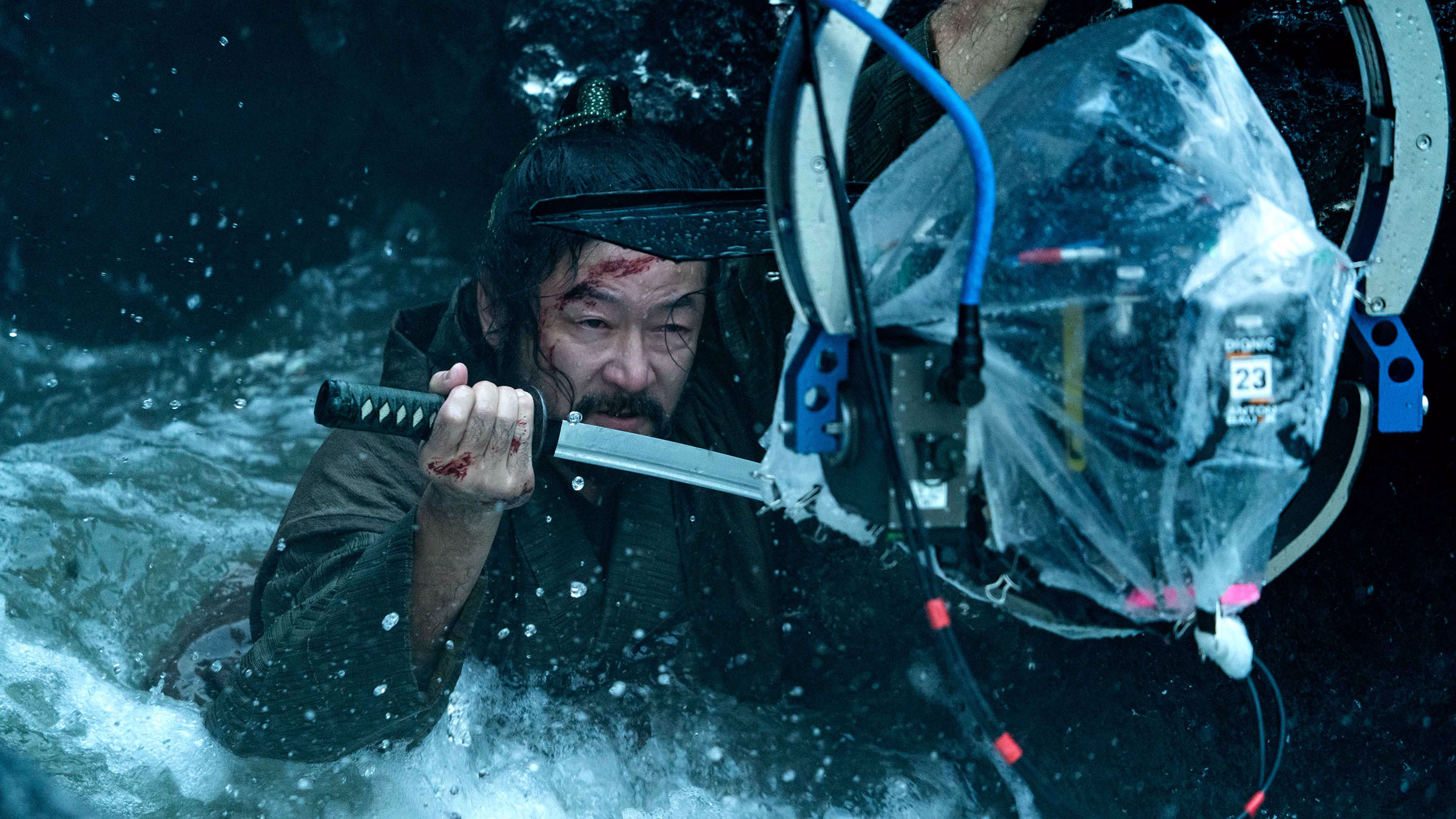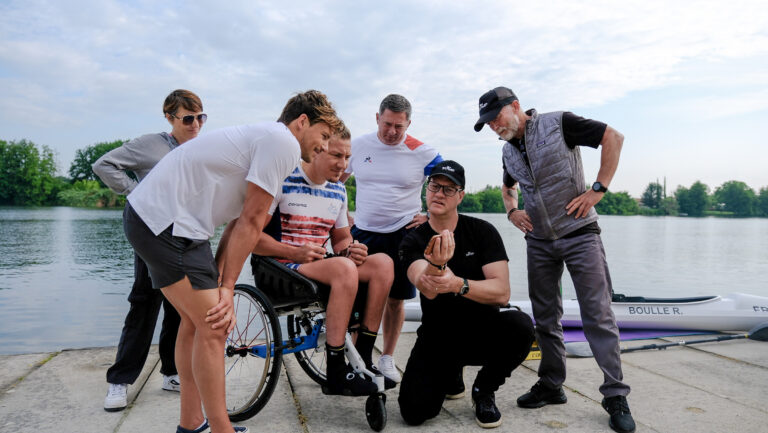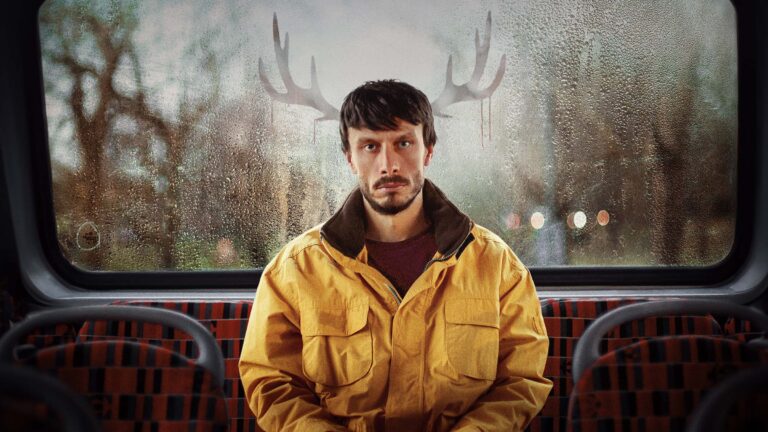The work of Shogun editors Maria Gonzales and Aika Miyake played a crucial role in the success of this adaptation of James Clavell’s novel. Maria and Aika created a fast-paced story, shifting the conflicts away from battlefields and into political intrigues by highlighting interpersonal dynamics, intense dialogue scenes, and the crucial role of female characters.
While editing, they were also often challenged with condensing the run times of episodes down from close to 100 minutes to one hour each, while still fleshing out the complex tapestry and culture clashes of 17th-century Japan and overcoming language barriers themselves.
Plot summary for Shogun
Shogun follows the collision of two ambitious men from different worlds: John Blackthorne, a risk-taking English sailor who ends up shipwrecked in Japan and in a country whose unfamiliar culture will ultimately redefine him, and Lord Toranaga, a shrewd and powerful daimyo at odds with his dangerous political rivals. Entangled with the pair is Lady Mariko, a woman with invaluable skills but dishonorable family ties, who must prove her value and allegiance.
In our discussion with Shogun editors, Maria Gonzales and Aika Miyake, we talk about:
- Starting off with subtitling
- The Red Hot Ronin Peppers
- Commercial breaking into the business
- Filling out the story with flashbacks
- “Feudal” gestures
Listen while you read…
Editing Shogun
Matt Feury: Let’s ease into things by asking a few questions about the standard operating procedure for a show like this, which would be how you got the job. Maria, I think we should start by talking about a show called Counterpart and how that may have played a part in you being on Shogun.
Maria Gonzales: That’s correct. I met Justin Marks on his first and only other show, Counterpart, which aired on Starz for two seasons. I came on as Dana Glauberman‘s assistant during the first season. It was a busy, grueling season. She did the pilot, and that allowed me to cut some of the episodes. She was gracious enough to share credits with me on two of the episodes that we did together. That led to me getting invited back on the second season as an editor.
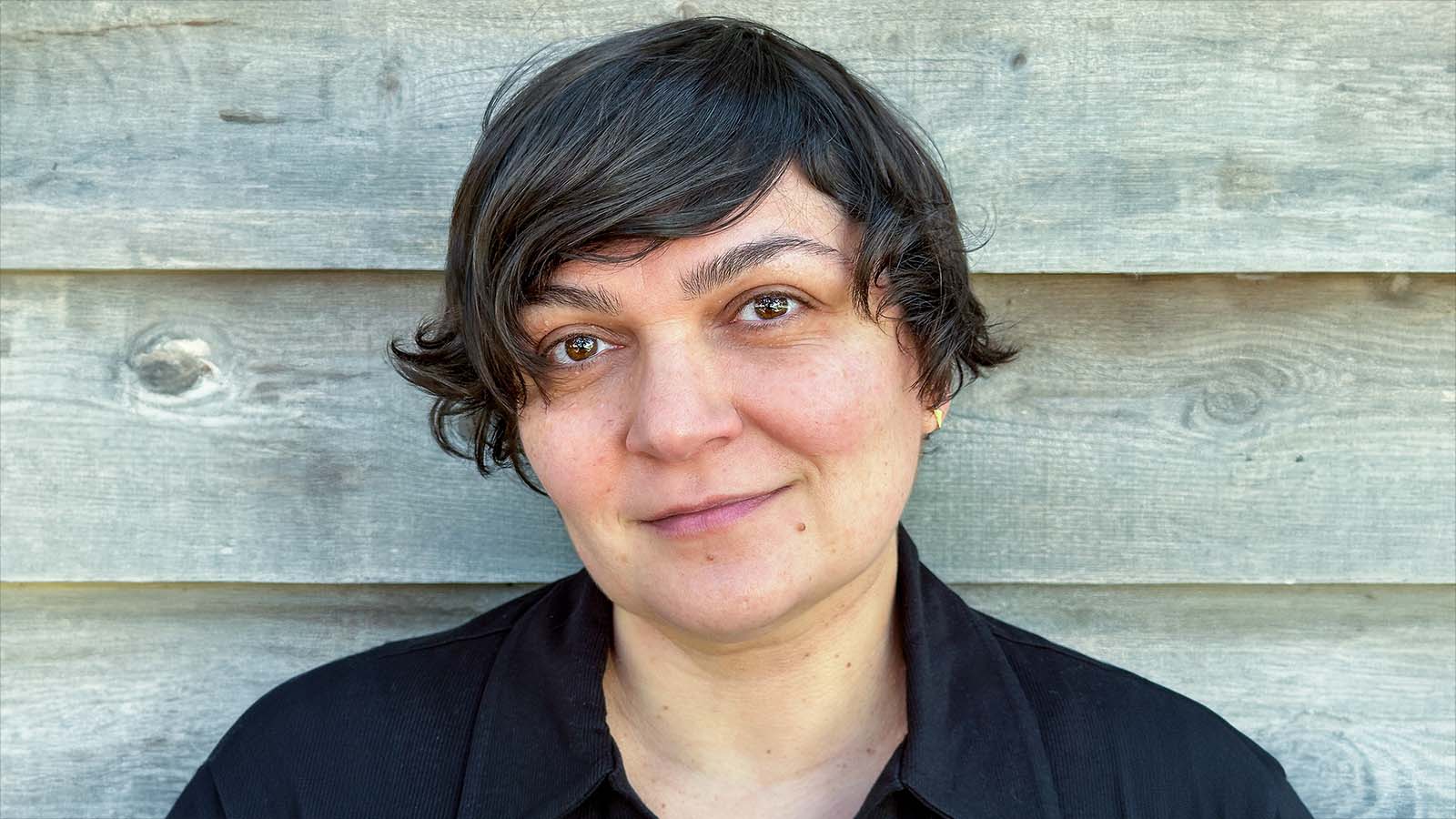
MF: We may talk about Dana again before this is over. Aika, I don’t think you worked on Counterpart and I don’t see any obvious prior connections between you and anyone else on Shogun. What’s your story?
Aika Miyake: I got a DM on my Instagram. That’s how I got this job. The post producer, Jamie Wheeler, found an article about me. I left Japan and moved to the U.S. in 2019 and one of my friends wrote an article for an English newspaper in Japan. The article talked about how I wanted to move to the U.S. because I felt very limited in the Japanese film industry. I wanted to chase my dreams. The producers of Shogun found that article, and then Jamie decided to send me a DM. That was the beginning. I’m glad I found that DM because it was hidden in a “requested” folder.
Maria Gonzales: This ties into Justin’s desire for authenticity on the show. It was important to have people in the cutting room not just of Japanese descent, but Japanese-native speakers and people who were intimately familiar with Japanese culture.
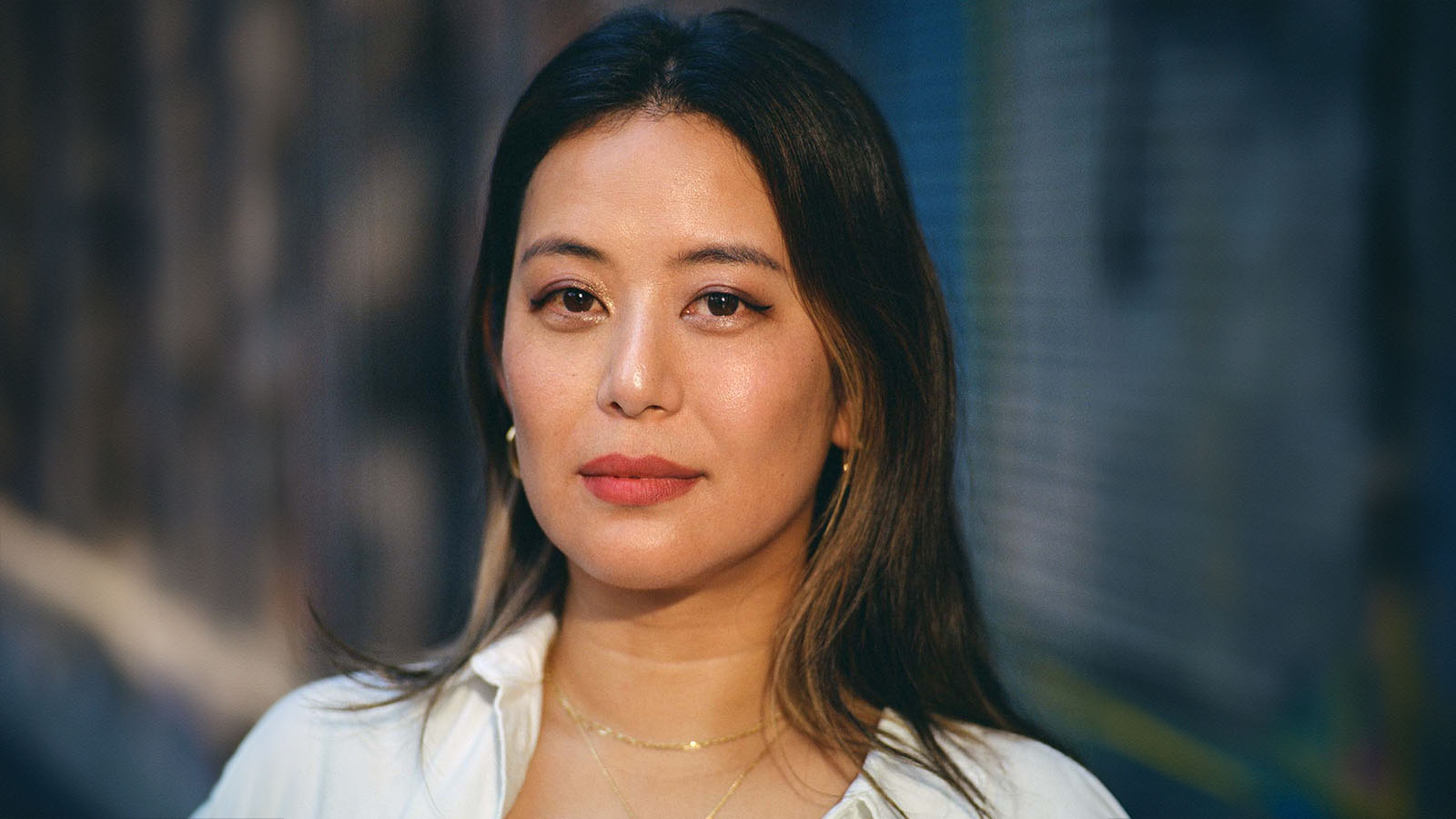
Aika Miyake: They were looking for someone who grew up in Japan, who had an authentic Japanese background, and who also understood the Western way of film cutting. That’s what I was struggling with in Japan. My way of storytelling is very Western. It’s not Japanese, so I couldn’t find a gig that I was excited about. So, once I got a visa, I decided to go West.
MF: That’s a good lesson for making sure to check those DM requests. You never know, it could be a big job. So, neither of you had ever worked together before Shogun. I’m not sure if either of you ever worked with the other editor, Thomas Krueger, either. What did you two talk about when you first met?

Maria Gonzales: We reached out to each other before we started the show. We were going to work on the first block, which was where they shot the pilot and the second episode together. So we knew we were going to be paired up from the get-go, working together. I remember Aika saying, “I’m so worried it’s going to be all cutthroat.” My goal was to ease her into the process. I told her, “There’s a reason you’re here. We need you. It’s going to be great.”
Aika Miyake: Maria has been very graceful from the very beginning. The way I got this job was not normal, but it was a dream come true. And I wanted to do my best, so I came in telling her, “I want to learn everything.” She was graceful enough to teach me what she knew. We started having coffee regularly and talking on the phone a lot.
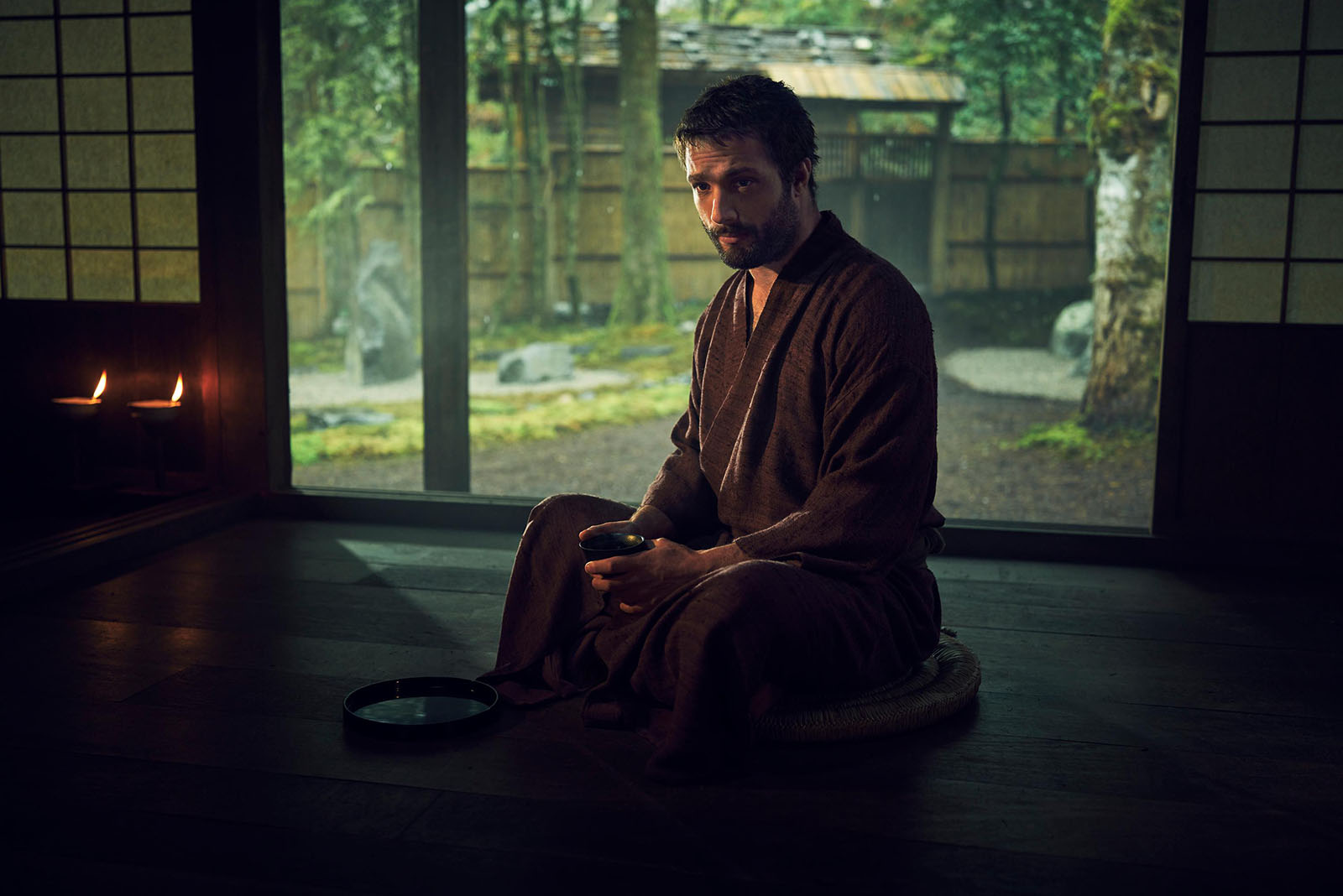
Maria Gonzales: We did that because we didn’t have a cutting room at the beginning of the show. Thomas came in during the second block and he has extensive experience working with Japanese-language material. You wouldn’t guess it from looking at his name, but that was how he ended up on the show. He couldn’t be here today because he’s busy. He’s cutting a feature in Japanese, again.
MF: I have to admit, I am old enough to remember the original 1980 Shogun miniseries. I didn’t watch it. I’m not that old. Did either of you read James Clavell’s book or watch the 1980 miniseries?
Maria Gonzales: I remember the 1980 miniseries. I’m gonna date myself.
MF: Two geezers. Okay.

Maria Gonzales: I was growing up in Eastern Europe at the time, so I think it came to us several years later. My grandma was a big Richard Chamberlain fan. If Richard Chamberlain was in it, we would watch it. The Thorn Birds, Shogun, you name it. But the miniseries wasn’t an influence on our show. We were specifically asked not to watch the original version. During production, Justin asked all the department heads to read the book. But when we got involved, there was just no way I could. I didn’t have the time.
MF: It’s a big book.
Aika Miyake: I started listening to the audiobook. I got halfway through but I got busy with the dailies. I knew about the 1980 miniseries. Toshiro Mifune was a huge talent in Japan, and I knew Shogun existed.
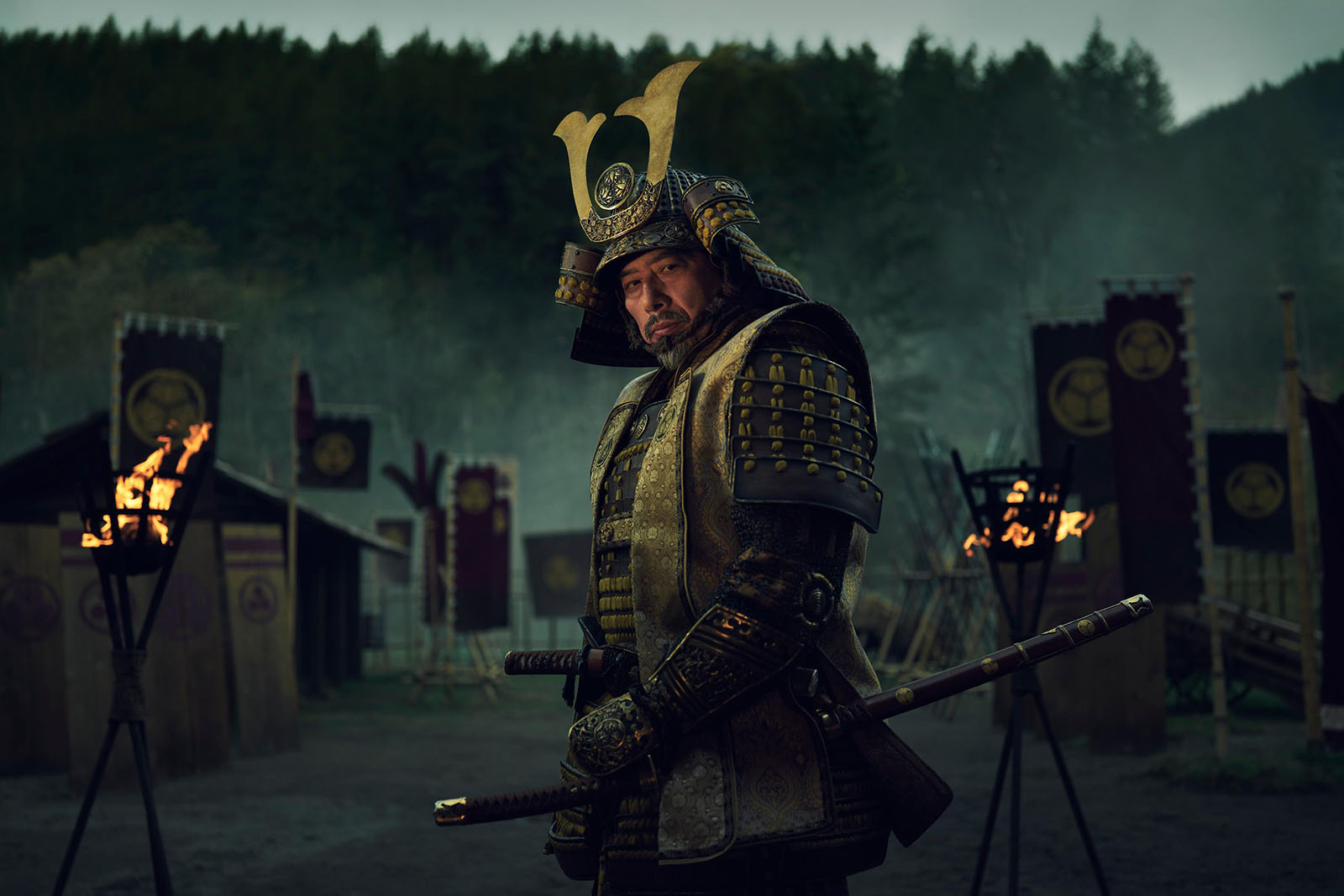
MF: A lot of people compare Shogun to Game of Thrones at a superficial level. Did anybody give you any other points of reference for Shogun?
Maria Gonzales: Justin has such an encyclopedic knowledge of cinema. He is a cinephile and he loves TV as well, so he gave us a ton of references. Just thinking about episode one, we talked about The Godfather, The Revenant, we talked about the Red Hot Chili Peppers. I mean, you name it.
MF: Wait a minute. We have to explore that last one.
Maria Gonzales: Justin brings up a lot of references and visuals that can guide us through the process. When we start, we have a very rich bed to draw from. The Red Hot Chili Peppers refers to the scene where Blackthorne wakes up naked.
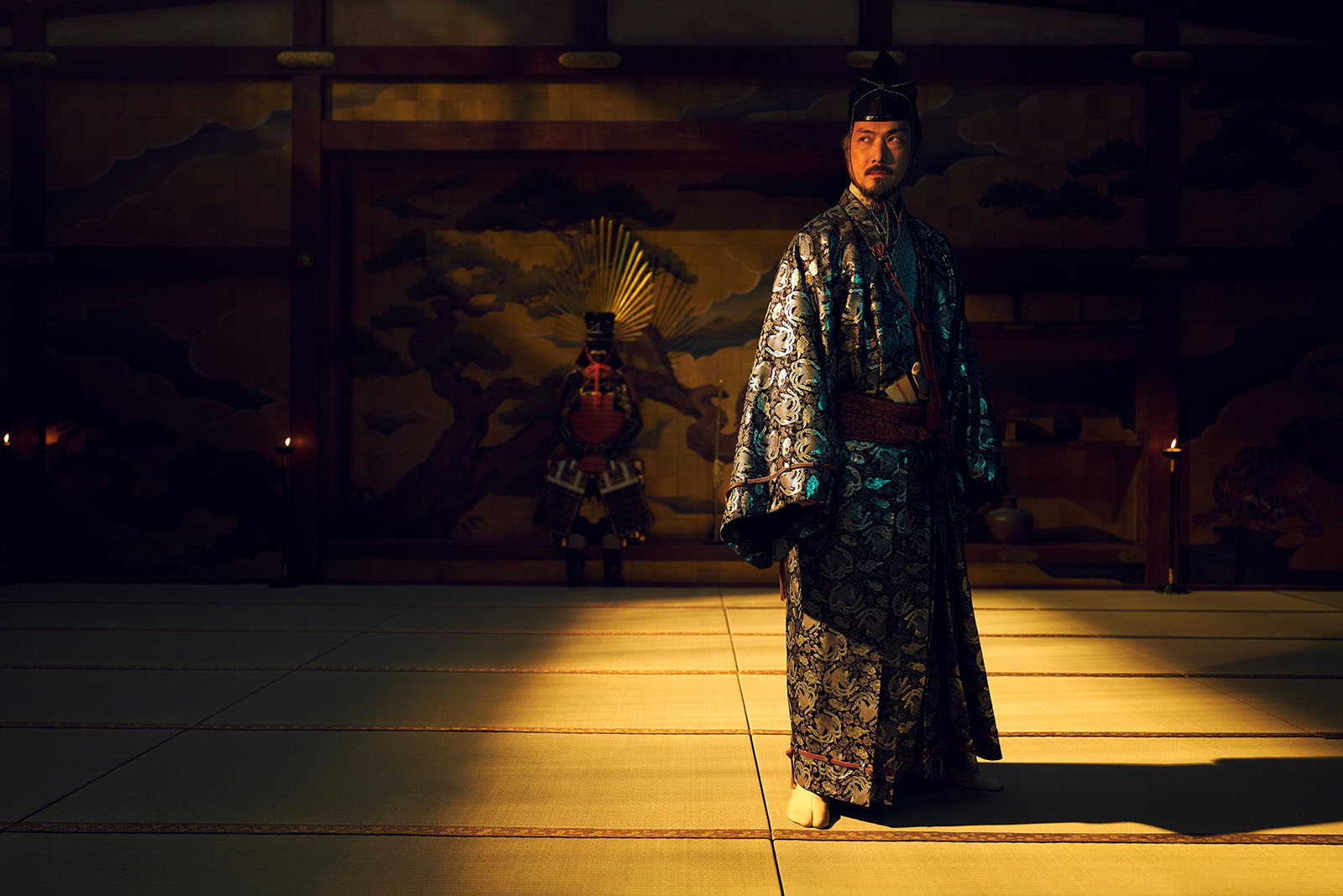
MF: That’s a good reference. One of the things that was unique about the 1980 miniseries was that it was shot entirely on location in Japan. Where was this show shot and where were you both cutting?
Aika Miyake: We shot entirely in Vancouver. We didn’t shoot one shot in Japan, which is crazy. Our entire production team was in Vancouver and we edited in L.A. editing at home.
MF: Were you both at home the entire time or just early on?
Aika Miyake: Just early on. By the time we got to Maria’s first director’s cut, we had a studio in South Pasadena, so we all went there and met each other.
Maria Gonzales: Not everyone had a room, but we had two editing bays for the editors and then a couple for the assistants. Once Jonathan van Tulleken, the director of the pilot in the second episode, came in, we started going into the office.
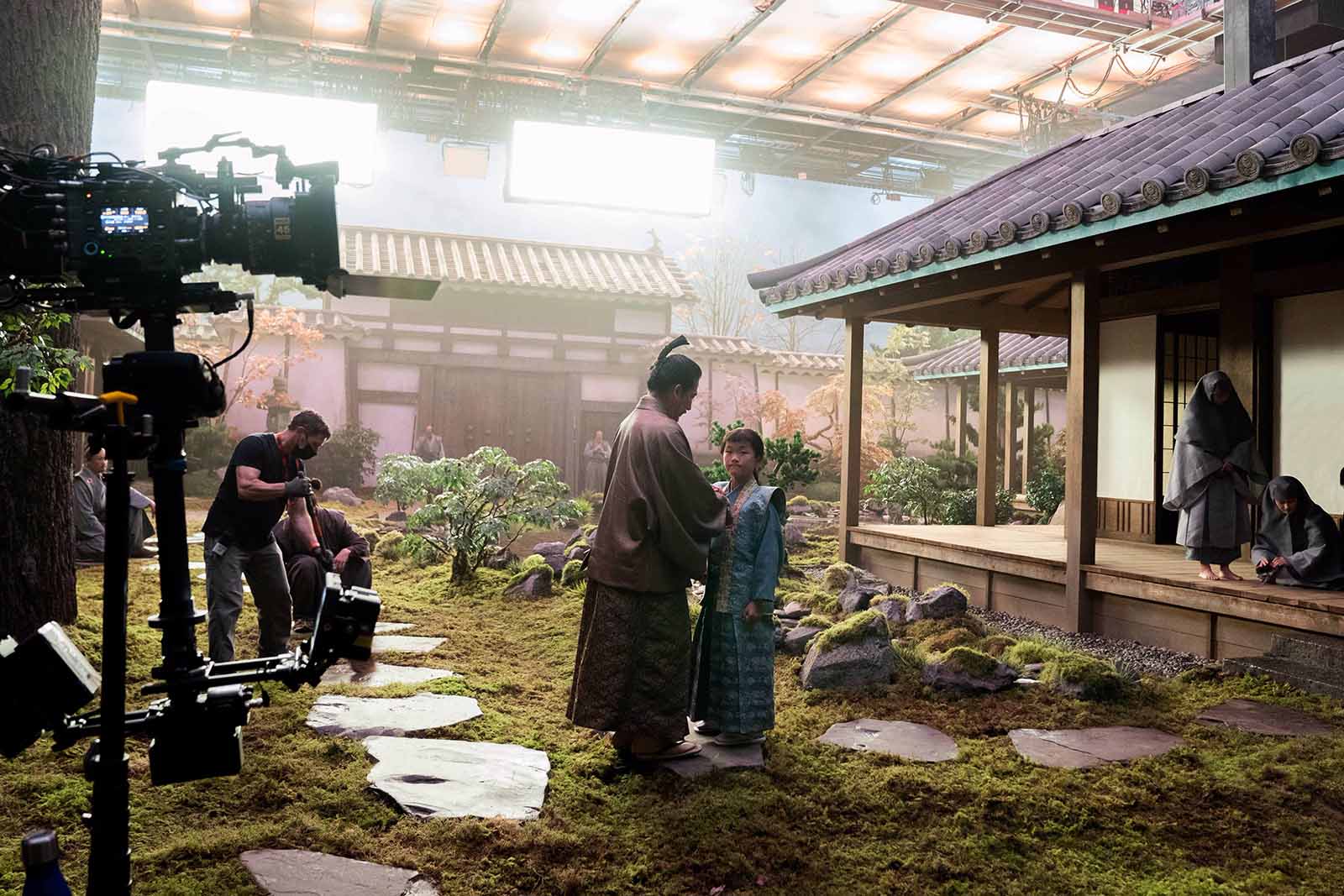
MF: How was the show shot? And what was the dailies process like?
Maria Gonzales: It just depended on the volume of the episode. The first two episodes were shot together and the third was a very heavy VFX episode. They shot the boat chase on its own. Episodes four and five were in a block together. Fred Toye directed those and Aika and I were again working together. It’s fuzzy after that. I know they shot episodes nine and ten together, but I think they shot seven by itself. I don’t remember what happened in episode eight.
In terms of dailies process, it was just like any other show. The exception was that we had our assistants do all the translation, meaning adding subtitles to every single take. That was something that I insisted on. I hate to say it, but I did. Initially, we were going to just do ScriptSync, but I didn’t see a world where we were reviewing takes with the directors without subtitles. If the actors run the entire scene from top to bottom, you’re going to lose your place if you don’t understand the language. So we had everything translated.
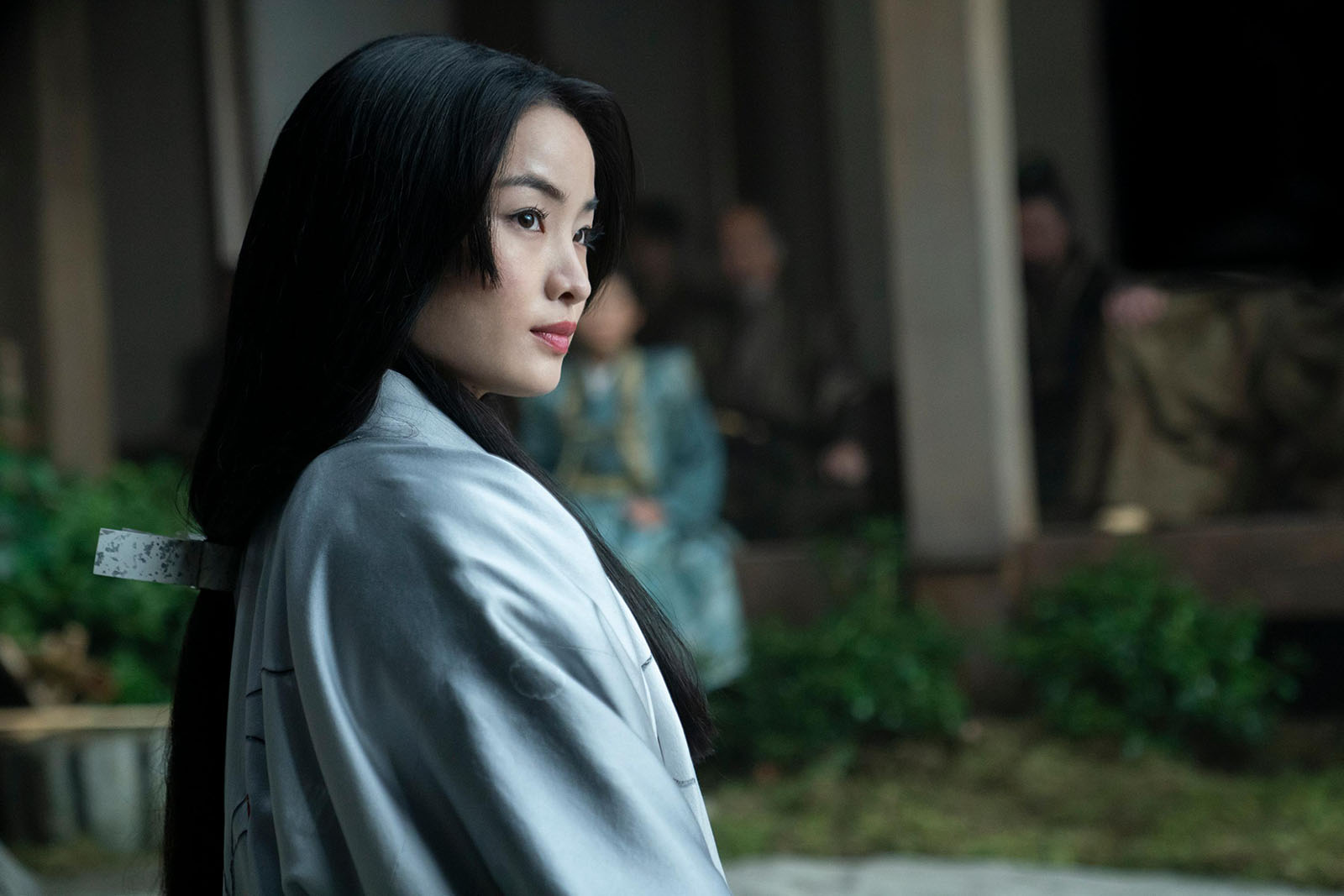
We had a full team. It was so much work and I’m so grateful. Lori, Beth, and Brian were our assistants. They would start it. But Masami Kagayama was our Japanese-speaking assistant. She made sure that all the translations were correct. It was a lot of work setting everyone up with dailies.
Aika Miyake: Masami would flag a take if it was an absolute flub. She would mark the bad takes so we would all know which ones were not exactly what was in the script.
Maria Gonzales: If the scenes didn’t match the script in any way or if the actors did a flub, those were all marked for us so we knew to stay away. Or where I specifically needed to stay away. But something interesting came out of that process. We used the script for the English translation, but Masami also corrected it if anything changed on set in any way.
That added to the living things that were our subtitles. It was a back-and-forth process. What Masami did was what we lived with during the cut. Towards the end, we spent a lot of time translating those lines and to make sure the subtitles were not only concise but accurate. They had to get the essence of the line across. Because from what I understand, the actual Japanese language spoken in the show is very poetic.
Aika Miyake: The language spoken in Shogun is classic Japanese. No one speaks that way in Japan nowadays. A running joke was that when Maria would learn a Japanese line, she would say, “When I go to Japan, I can use this line!” And then I would say, “You’re going to sound very classy.”
MF: Burning in the subtitles is such a unique aspect of your show. Does that mean the actors have to stick closely to the script?
Aika Miyake: I think so. In terms of language, they allow Yabushige to be a mix of modern and classic Japanese. We would pull some of his ad-libs sometimes. Those were fun to cut. But our other characters pretty much had to stick to the original scripts.
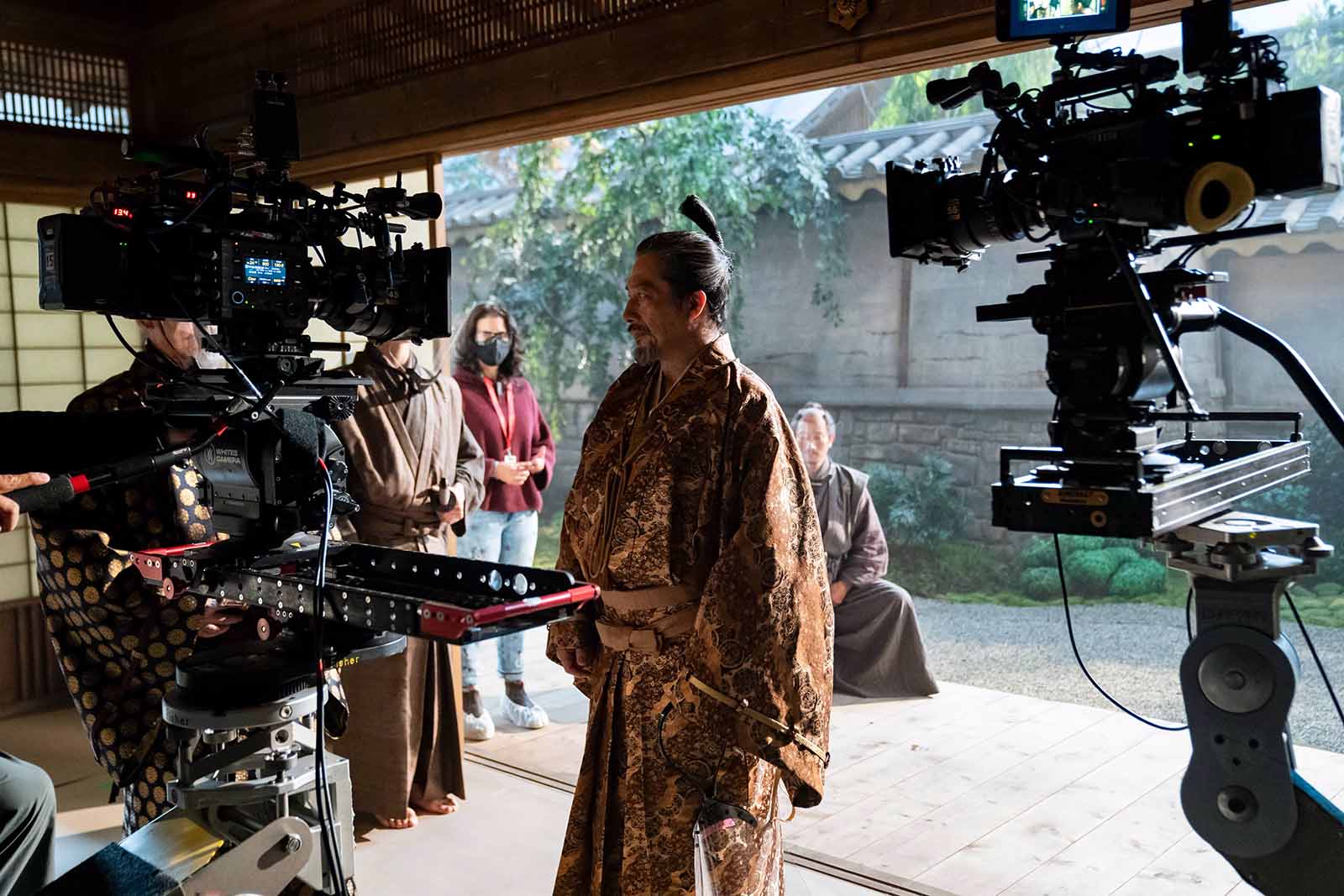
MF: This is such a big show. Each episode is around an hour. For that one hour, how many hours of dailies would you have to work through for each episode?
Aika Miyake: I think I had forty-two hours of footage for episode eight.
Maria Gonzales: That was a special case. The production didn’t usually shoot with multiple cameras unless it was necessary. Shogun was shot like a feature. Christopher Ross, who was our DP on the first two episodes, rarely used two cameras.
Aika Miyake: At most, two angles.
Maria Gonzales: They introduced a third camera for some of the bigger action sequences, but even that was rare.
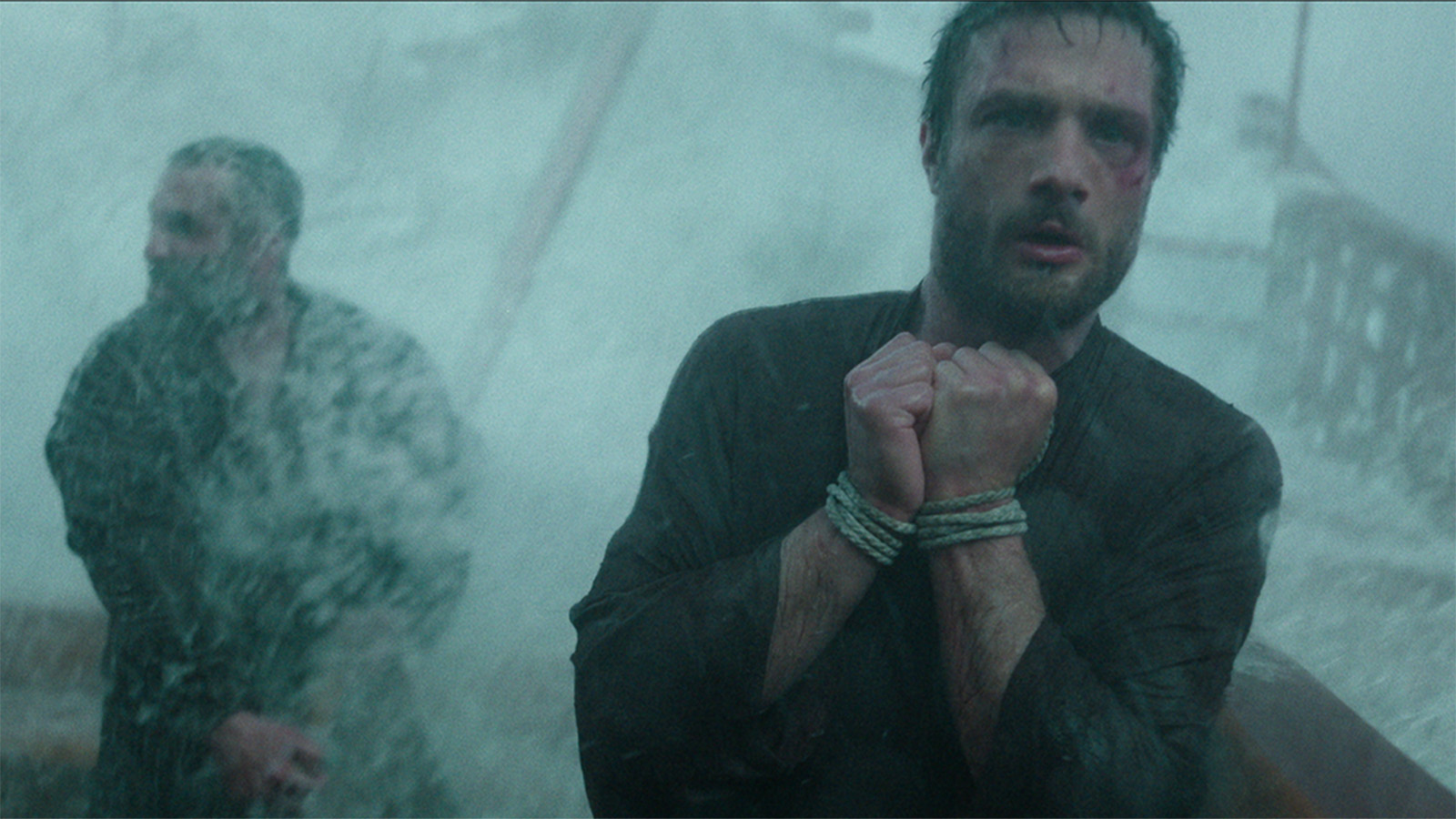
MF: Your episode assignments seemed pretty straightforward. You both rotated until the finale. But was there anything more to your episode assignments?
Maria Gonzales: I was invited to cut the pilot, and my episodes were four, seven, and ten. It wasn’t until the very end that we realized, “Oh, I’m going to be jammed with the pilot while I’m cutting episode seven.” So Aika and I joined forces for episode ten. But other than that, there wasn’t anything specific.
Aika Miyake: Yes. Justin told me that episode two was very language-heavy, with lots of translations happening. There were two big Toranaga and Blackthorne scenes with Mariko and Alvito translating. I think it was a little intentional on Justin’s part to put me on that episode. And he was very satisfied with the result. Afterwards, we started to rotate episodes.
MF: A lot of digital ink has been spilled on blog sites explaining who all the characters are and how they relate to one another. For you, as the editors, did you have any devices for keeping track of everyone, either within the Media Composer or with some sort of chart, wallboard, or cheat sheet? How do you keep track of all these characters and their relationships?
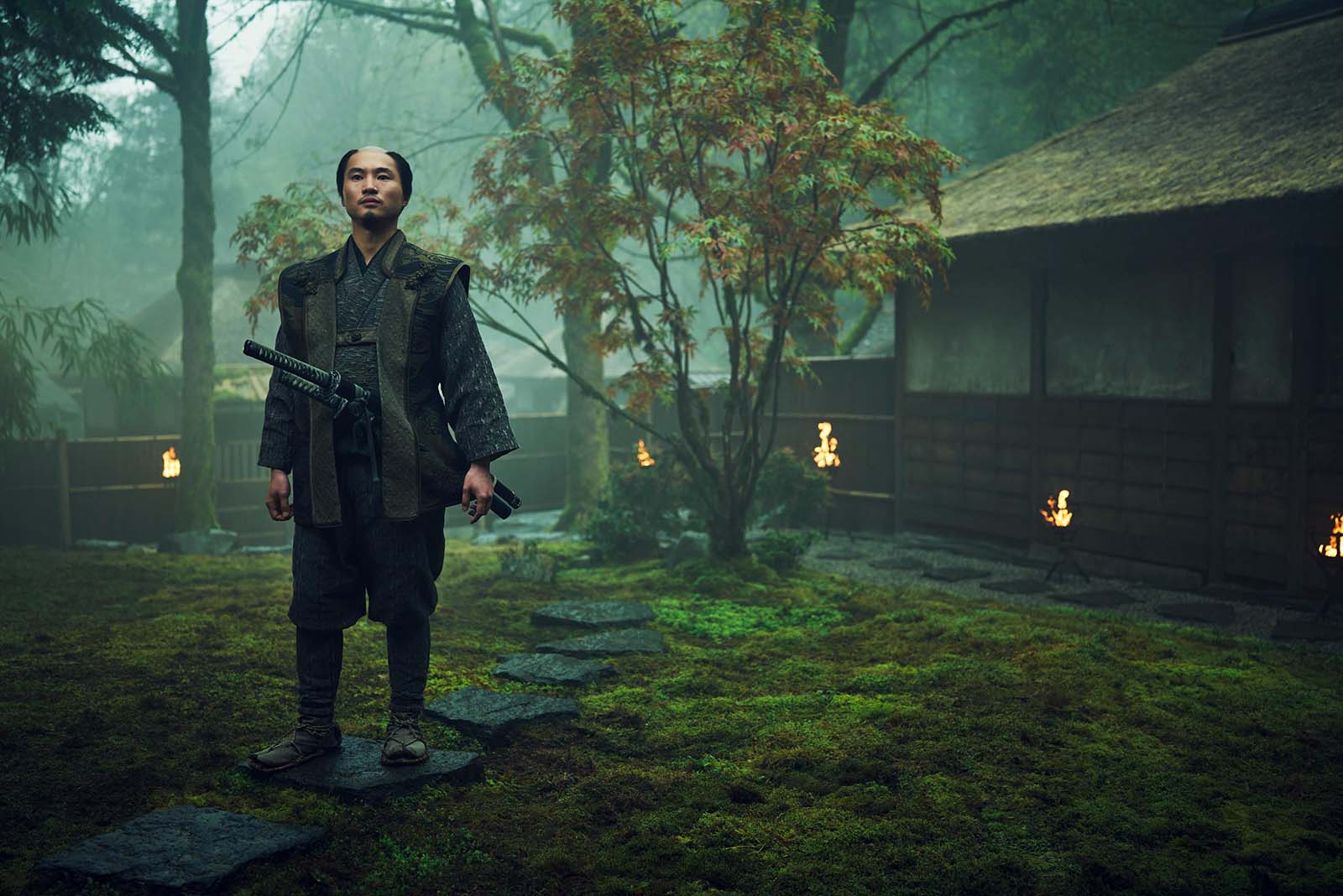
Maria Gonzales: When I first read the pilot, I had to draw a little chart for myself because I couldn’t keep track of all the names and how everybody was related to each other. I’m very visual, so once we started seeing people on screen, it was never an issue. We were just rolling with the show, you know? And maybe it’s part of Counterpart. That show was also pretty complicated in terms of characters. Every character in that show had their “counterpart” and we had to track who was who and what their personality was like. I sort of expected a Justin Marks show to be a little bit more complicated.
MF: Shogun moves pretty fast from the beginning. We jump right in with Blackthorne, and you don’t take a lot of pains to explain what exactly is going on. I guess this question is specific to the pilot. How do you figure out how much education and context setting you need to provide versus just getting the momentum going and hooking the audience?

Maria Gonzales: That was a big part of the pilot. We had significant reshoots on the pilot, and that was part of it. Those discussions were mostly between Justin and the studio. The story initially began with Muraji finding Blackthorne’s ship. Then we discovered Blackthorne with his crew on the ship, and we went from there. As open as the show is towards subtitles, I think there was some hesitation about starting a show with eleven or twelve minutes of no English. We didn’t know how that was going to go, and we found we wanted to know where Blackthorne came from and what his motivations were.
I think there was some hesitation about starting a show with eleven or twelve minutes of no English.
The scene with the captain that now opens the show was added in reshoots. There was a lot of debate about whether or not to keep it. It was the same with the title cards at the beginning that explained Shogun’s backstory. I think some of them were added after I was gone.
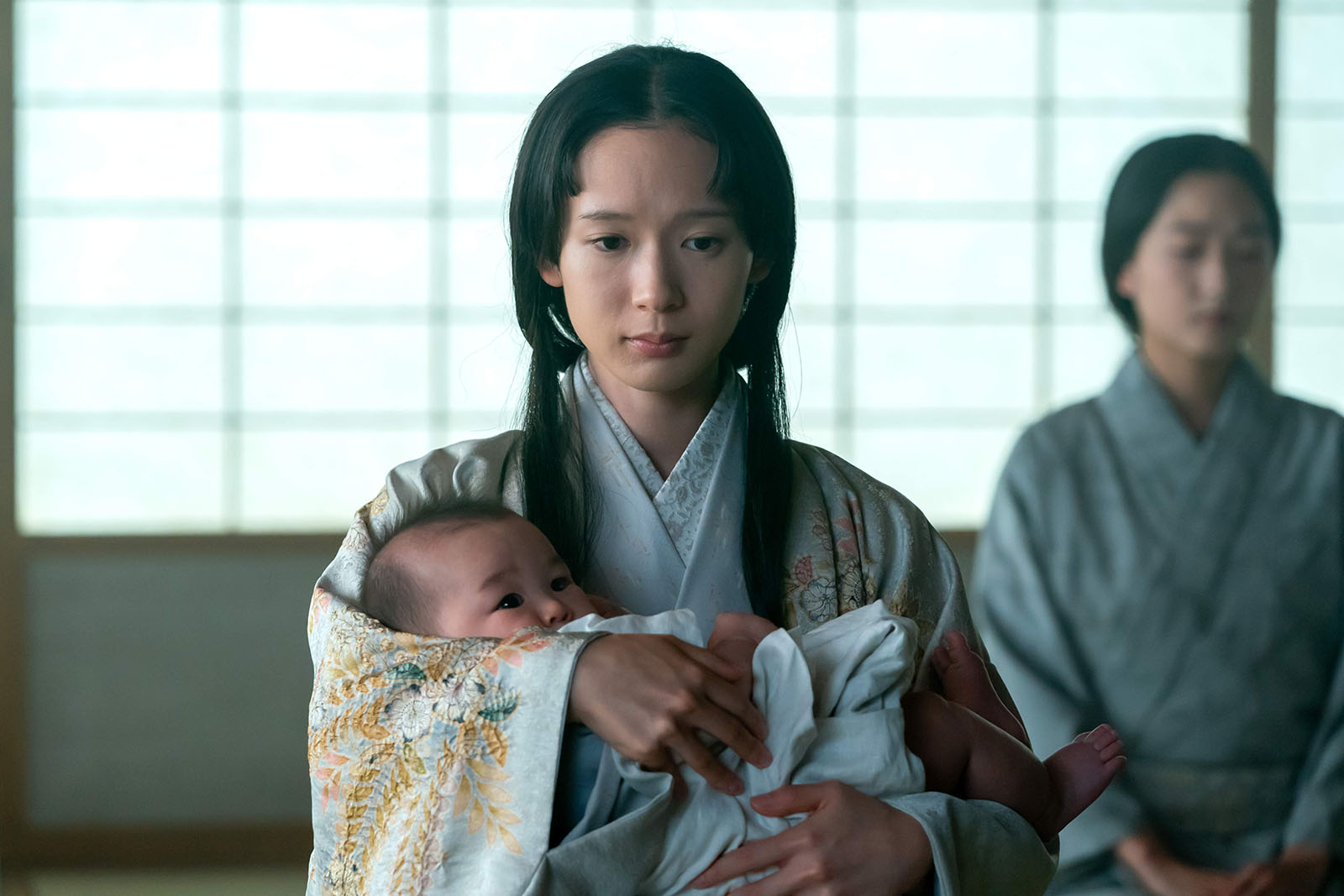
MF: Aika, I think you were having some fun with the idea of classic Japanese versus modern Japanese. The story of Shogun is based on real history. Is this something that most modern Japanese people are aware of already?
Aika Miyake: In Japan, the Sengoku period is the most exciting era for stories on TV and for books and things like that. The house where I live is about twenty minutes away from the castle where the real person that Toranaga is based on was born. The area where I live is famous for three samurai. Their names were Oda Nobunaga, Toyotomi Hideyoshi, and Tokugawa Ieyasu. Those three samurai are basically from my area, but I never studied history that well. Working on this, I thought, “I think it’s time for me to look back on it.” In the beginning, I was reading a lot of history books and internet pages. It’s very ironic. I moved to the U.S. but doing that made me look back into my roots. It gave me a deeper appreciation and helped me find beauty in my culture.
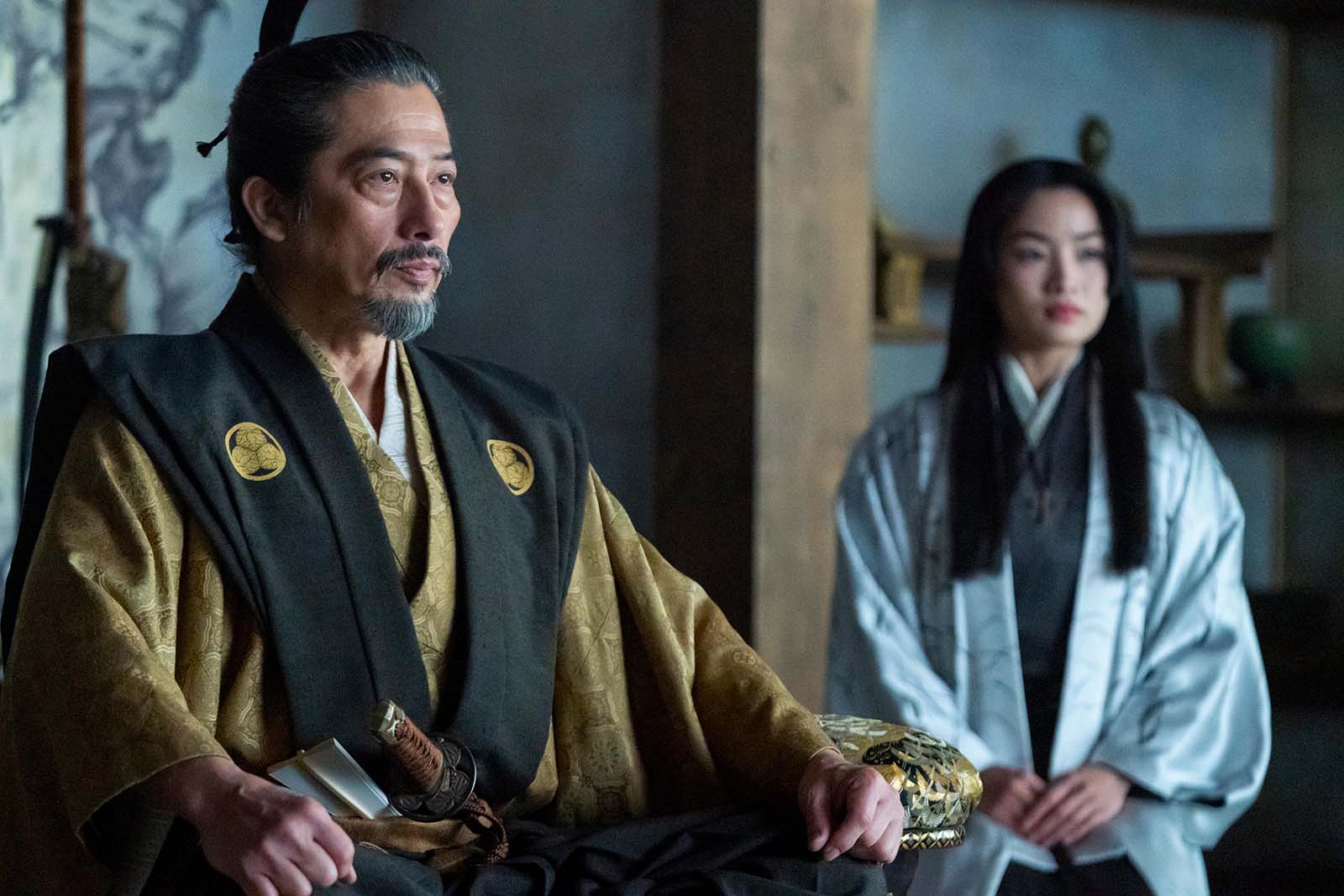
When you look at the Shogun footage, you see the costumes, the way people lived, and all the poetic language. When I saw all these things, I discovered that I was proud of my people, like my grandmother was. She always loved writing haiku. She has hundreds of notebooks filled with her haiku. I grew up hearing how proud she was about writing them. Those cultures are from 400 and 500 years ago. But I feel connected to it. It’s a profound feeling to be able to have this kind of history. Working on Shogun changed my life.
MF: That might be one of my favorite answers ever. Let’s talk a little bit about the pacing of the show. This is something I didn’t notice at the time, but when I thought back on Shogun, it felt like you didn’t do a lot of intercutting. The scenes completed their intent before you moved on to somewhere else. Yes, things were happening simultaneously, but it wasn’t like you were going back and forth within scenes. You were finishing the thoughts and moving on. That technique helped me as an audience member stay up to speed and not get lost. Can you talk about the pacing of the show? Did you purposely finish a scene before moving on to something else?
It’s a profound feeling to be able to have this kind of history. Working on Shogun changed my life.
Aika Miyake: Pacing-wise, I went into cutting the show thinking about it as a pure drama kind of like Game of Thrones. I had that kind of mindset. Quickly, I figured out that Shogun had a little bit more comedy. It was more like Succession. Thinking about it like that was helpful. Comedy pacing needs to have the right timing, and that changed my perspective. It made me cut faster in some parts and to cut slower in others.
I come from a commercial background. One of my editing styles is that I like to create tension by cutting fast, but then letting it go loose and letting it feel. Sometimes I don’t do it intentionally, but it’s everywhere. My friend pointed that out the other day, and I thought, “That’s true!”
Maria Gonzales: For me, the pacing was kind of determined by how I viewed the scene and what there was to accent within the scene. There was so much going on in almost every scene. We went from very serious moments to comedic moments. But we stuck to the script. As editors, our job is to represent the script and the story structure. I don’t think we stepped away from any scenes to go into another until episode ten. But even then, I think we ended up undoing that, especially in episode ten. Some of the separated scenes came back together as a singular piece. So I guess there was an overall effort to finish a thought before moving on to something else.

Aika Miyake: I found the flashbacks to be interesting. We didn’t have a lot of flashbacks in the beginning, but for the audience to understand the story better, we started to experiment with adding in a few flashbacks. I think it helped. It’s hard enough to learn all these new Japanese names and characters. I think the flashbacks helped to guide some of the feelings and stories.
Maria Gonzales: And many of those flashbacks were scripted. A lot of the teasers are flashbacks, the ones in episodes six, seven, nine, and ten.
MF: We were talking about the different periods of the Japanese language, and we talked about pacing. Let’s talk about John Blackthorne and his adoption of the Japanese language. He seems to be a pretty quick study of Japanese. By the end, he’s pretty good. I don’t recall feeling like I knew exactly what the time jumps were. Was thinking about how quickly Blackthorne adopted the Japanese language something you had to think about?
As editors, our job is to represent the script and the story structure.
Maria Gonzales: It’s something that came up in the cutting room. Sometimes we had to tone it back in terms of his reactions if it felt like, “Oh, he understands exactly what’s going on.” That was a subject in the cutting room.
Aika Miyake: I remember when, in episode eight, Blackthorne and Yabushige are on the ship going to Osaka. They are speaking on the deck and they don’t quite understand each other, but at the same time, they do. That was one thing where we experimented a lot. In some passes, Blackthorne started to understand Japanese too much. Then in others, he didn’t understand at all. We had to find the right place in the middle that felt correct.
MF: It’s funny that we’re talking about Yabushige because the comedy, for the most part, seems to be carried by two characters. The first one is Vasco Rodrigues, whom we met early on. He’s very funny, and then he’s gone for a while. Then we get to know this Yabushige guy a little more and he starts being funny. It’s almost like they passed the baton from one to the other.
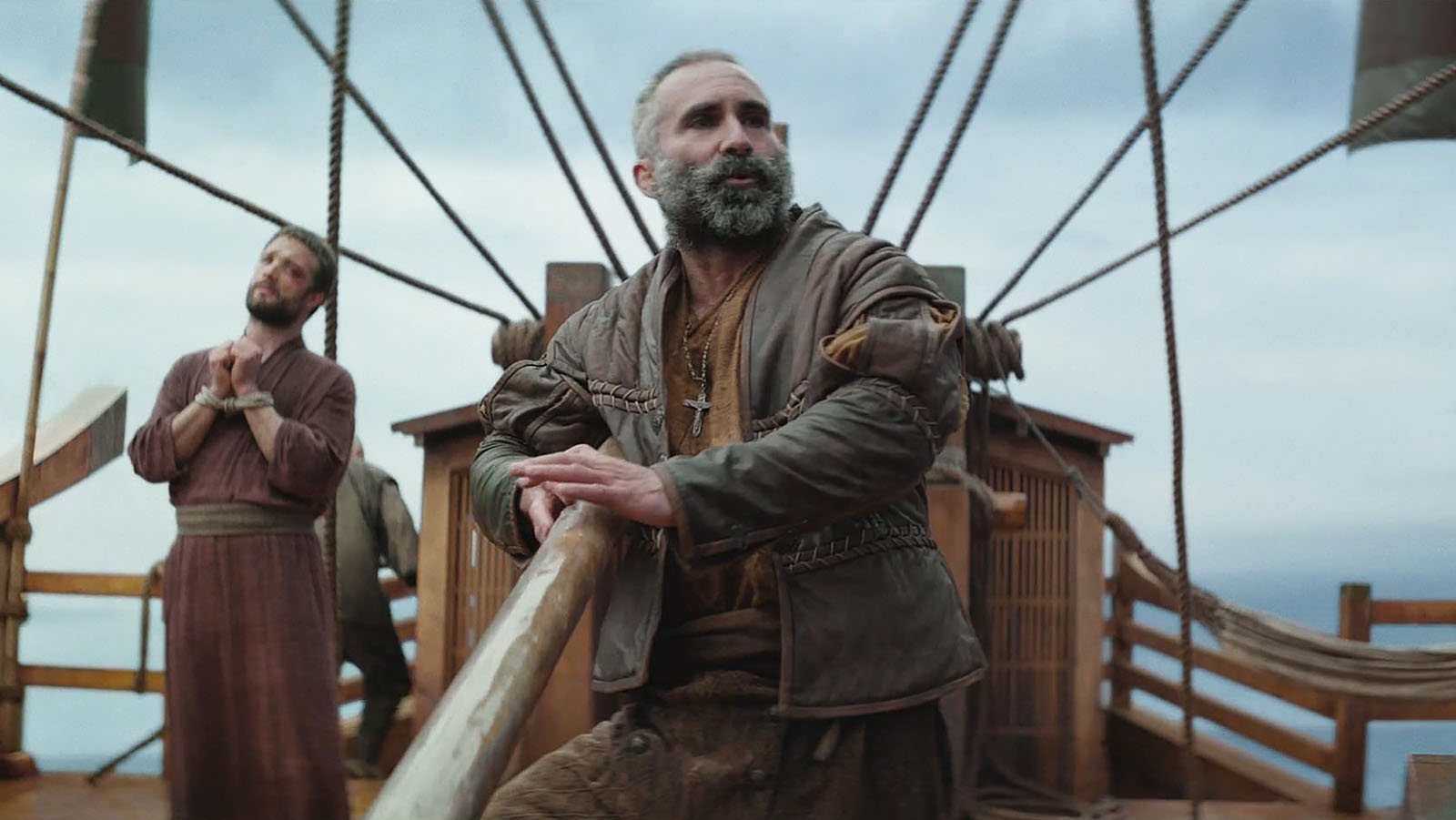
Maria Gonzales: Tadanobu Asano, the actor who played Yabushige, did a phenomenal job. He had the most sort of leeway when it came to improv, and he leaned into it. When I started seeing his footage, that was something that I wanted to embrace and showcase. You need levity in a show like ours. Rodriguez, by his nature, is a fun, swashbuckling guy that everybody loves. We all love Rodriguez. But I want to point out Fuji too because she’s pretty funny. She may not have funny lines, but her reactions are amazing.
Aika Miyake: There’s also the regent scene, not the one in the pilot. I think it’s in episode five when they’re having a difficult time deciding who is going to fill Toranaga’s position. It’s not an obvious kind of comedy, but it’s an awkward comedy. It’s not “haha” but you can sit back and think, “Oh, that was funny.”
MF: Very subtle.
Aika Miyake: Subtle comedy, yeah. And it happens throughout the show. I love the scene of Blackthorne punching through the shoji door and looking at the lady coming in.
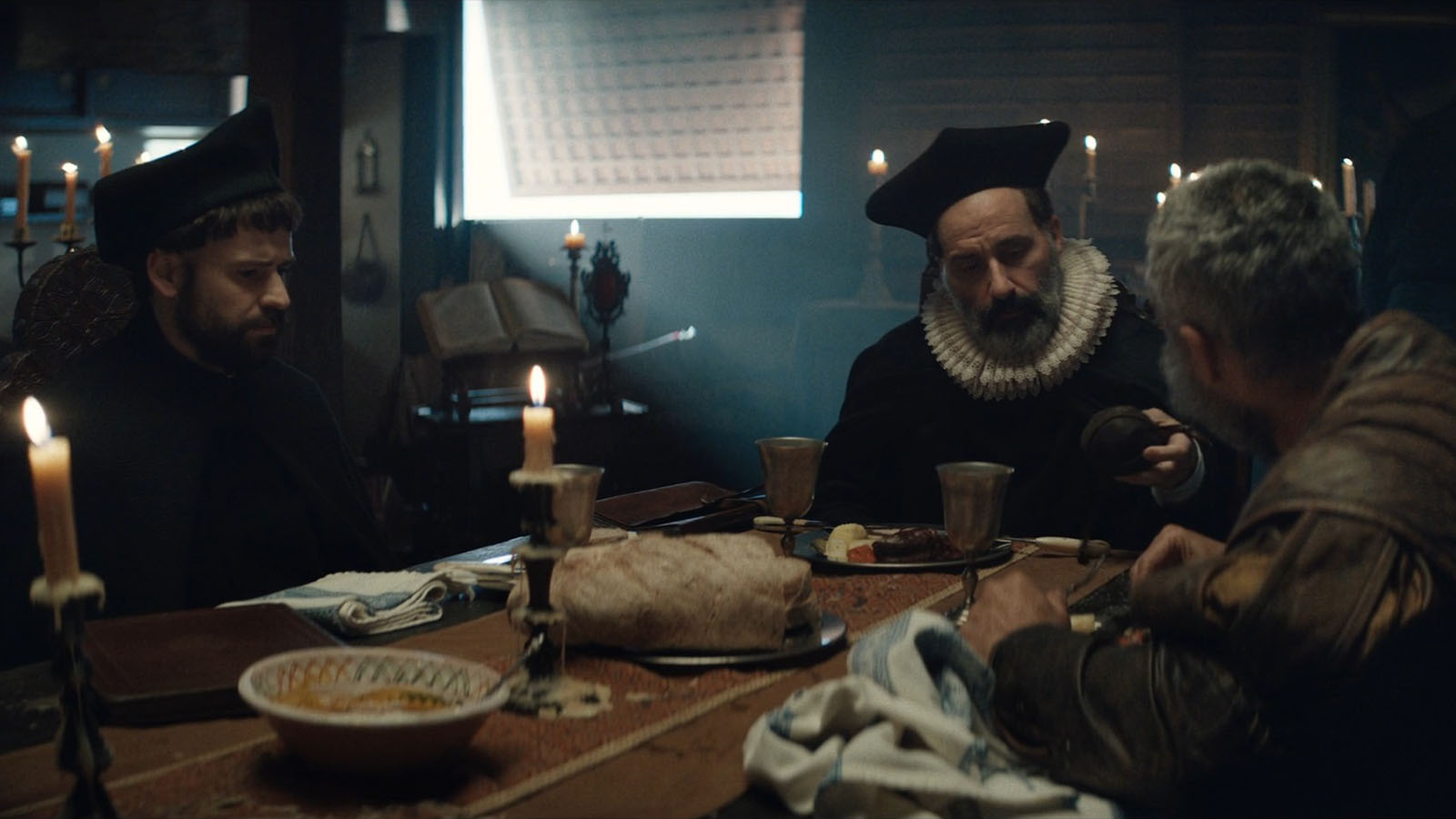
Maria Gonzales: Sometimes we would hear from Justin, “Why wasn’t this cut for comedy?” and we would think, “Oh! All right, all right.” It was important to him for the show to have a sense of humor.
MF: When we first meet Yabushige, he does not seem all that funny. He boils a guy to death in the first episode. In situations like that, I usually ask the editors about being careful not to make a character too dark if they intend to eventually have them be relatable or likable. But he boiled a guy alive.
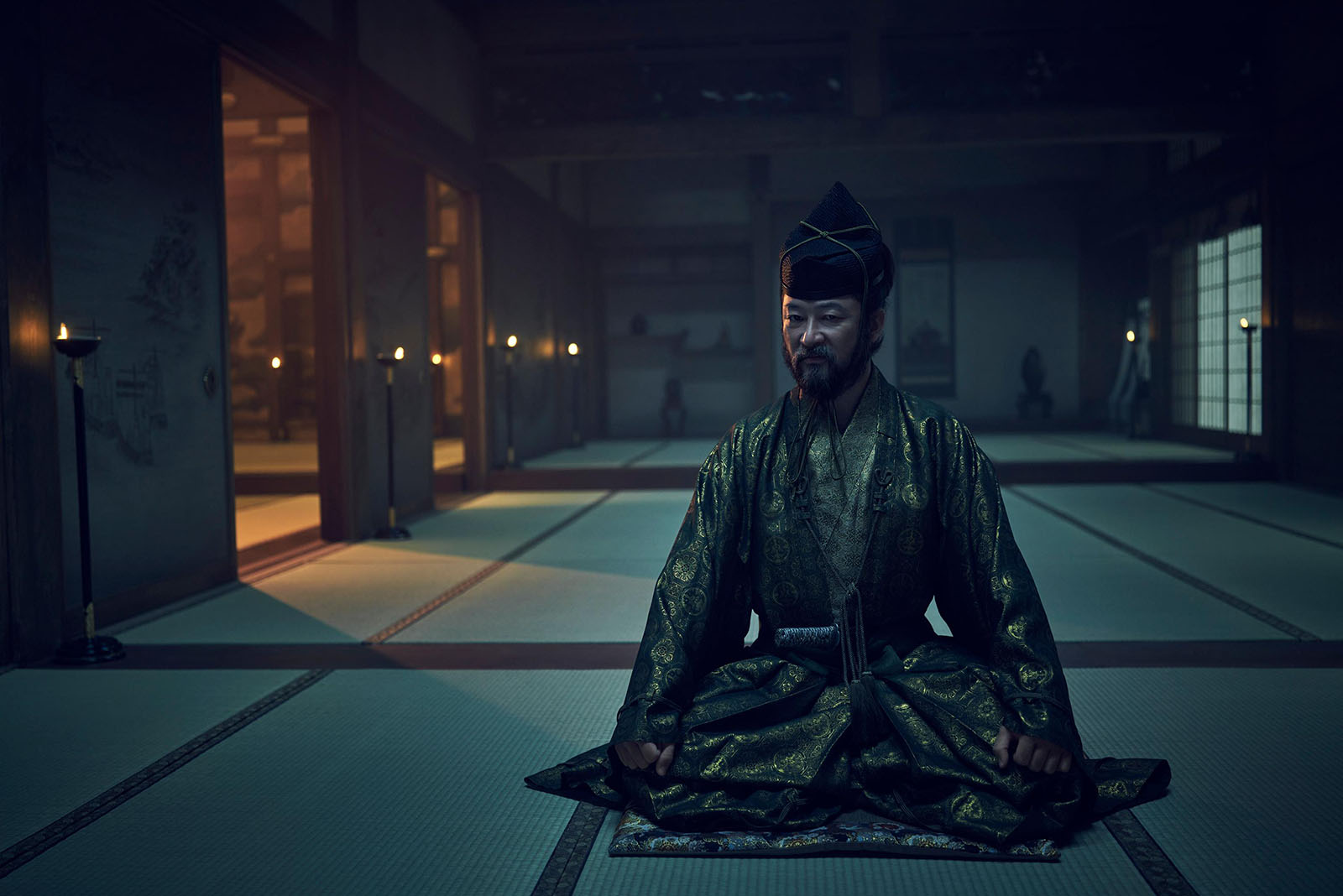
Maria Gonzales: That’s a testament to this show because even in that episode, Omi cuts the guy’s head off for not listening to him. Then, ten minutes later, he composed the most amazing poem on command. You have Yabushige who orders his men to boil someone alive. Then he enjoys Omi’s poem later. So I don’t know. They’re multifaceted characters for sure.
MF: There are funny ways to boil a guy alive, I guess. We should go back to the subtitling part. You already explained when they were introduced into the process. Most of the show is delivered in Japanese, so you know that most of the audience is going to be spending time looking at the bottom of the screen to read them. Does that influence the timing of your cuts? Do you have to let a shot rest a little longer so the audience will have time to absorb what is being said?
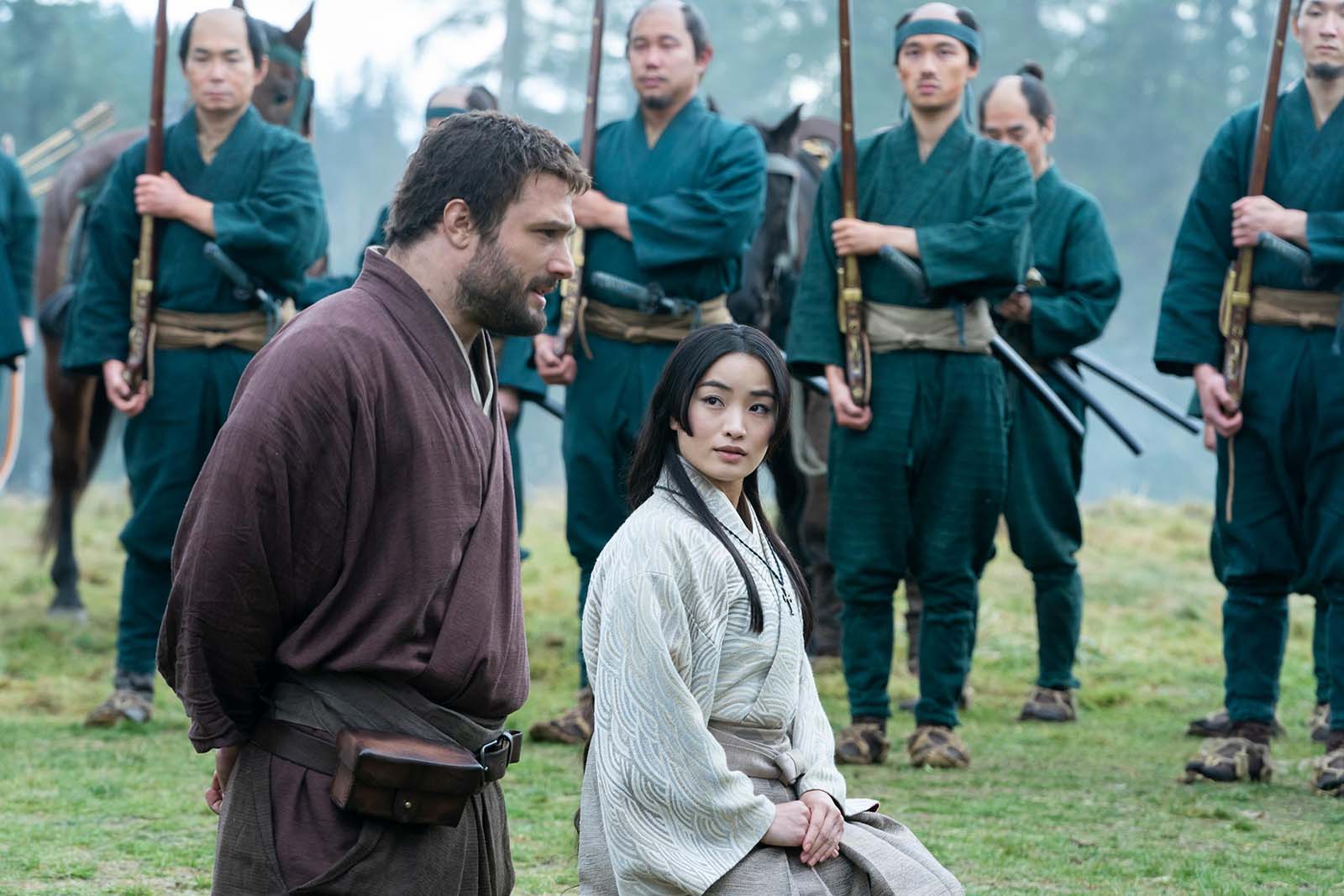
Maria Gonzales: No. That was something that I struggled with in the beginning. But I would often turn off the subtitles to watch cuts and make sure they flowed. We put a lot of work into those subtitles on the back end. We never adjusted cuts for subtitles. Instead, we adjusted subtitles for the cut so that they would fit in the frame. We never had a second row of subtitles. You probably didn’t notice that, but it was a conscious decision on our part. It was important to stay true to the poetic nature of the Japanese language, but it was also important to not burden the audience. We needed those subtitles to be as accessible as possible.
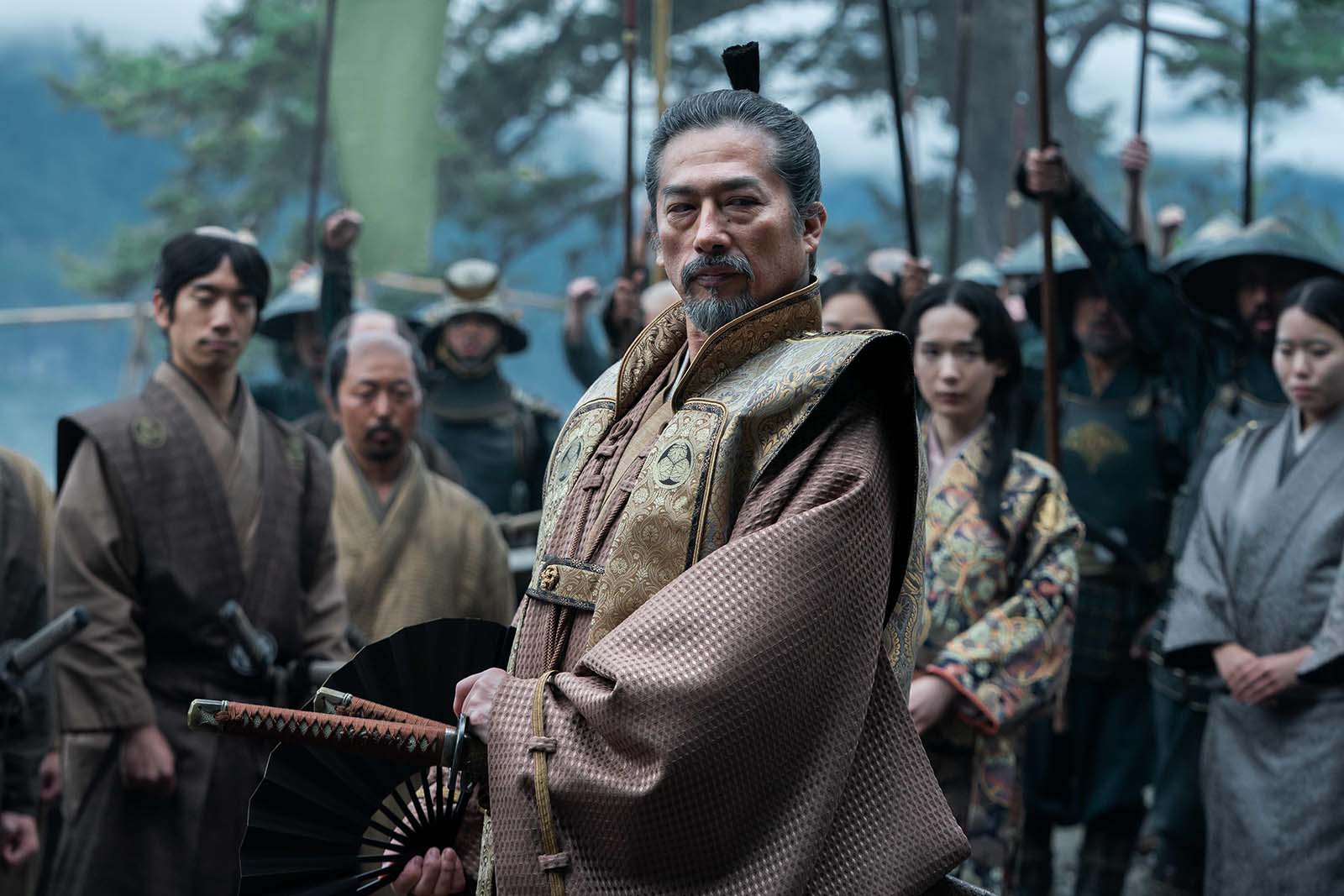
MF: It seems like there’s a pretty significant VFX component to the show, certainly with the ships and the landscapes. What were the most demanding aspects of the VFX work in the show? And how did you handle the temp work?
Maria Gonzales: It was a massive VFX show. Different sequences required different kinds of attention editorially. I was lucky during the pilot, for instance. A lot of stuff had been done practically against a greenscreen or a blue screen. And we had a great team of VFX editors in Canada who would temp things for us. Shout out to Warren Mazutinec, Tyler Ruocco, and Kelly Wong.

For director’s cuts and presentations to the studio, we made sure to put our best foot forward. We tried to temp things out in the best way possible. Thomas is not here to speak about it, but I want to point out that the ship race scene in episode three was probably the most VFX-heavy sequence in the entire season. Kudos to him for putting it together, because there was no previs. It was just a lot of blank screens and titles that had to play out the sequence story-wise until shots started coming in.
MF: Shogun has gone to great pains to be as authentic as possible, right down to having expert consultants on things like gestures. Do you have to scrutinize things like that in the cutting room? Would you use frame editing tools like Animatte to preserve a performance from one character if another one in the frame wasn’t spot on with a gesture?
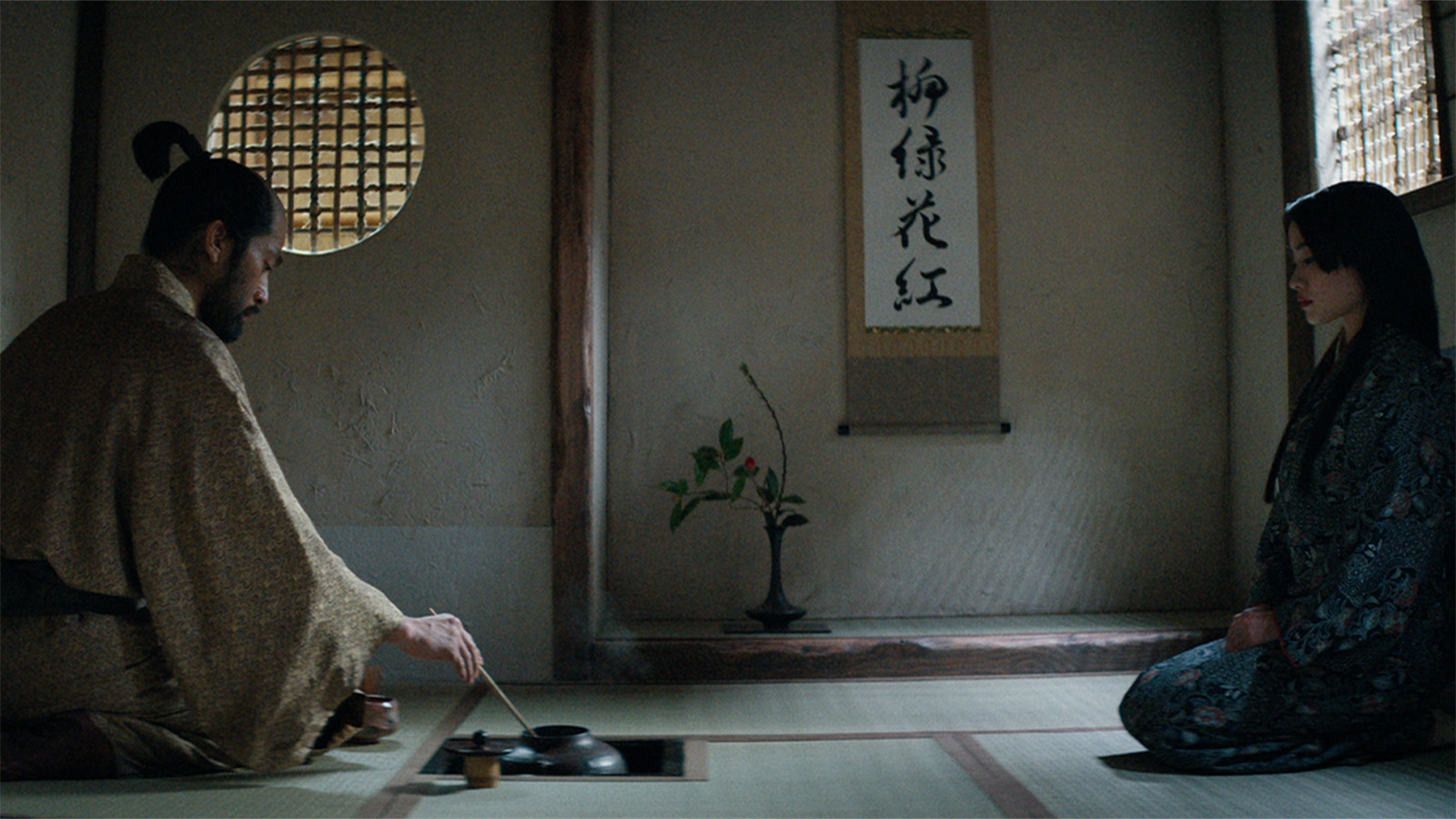
Aika Miyake: The gestures were beautiful, but it took a long time. At one point, I started thinking about bowing. Sometimes they bow two or three times, like when they go through a tatami mat they bow again. It’s just too many bows sometimes! So we would just pick out the bow where it was needed. Bowing for me is kind of like saying hello on a phone call in a TV show. You never see them say, “Hi, how are you?” You just cut to the chase. We didn’t want to drag people into these moments too much.
But I want to talk about the tea ceremony scene in episode eight. We shot that with the actual advisors, the director, Emmanuel Osei-Kuffour, Justin Marks, and Rachel Kondo. It was so important for them to shoot the whole thing. The whole ceremony takes like twenty or thirty minutes just to make tea. They would rinse out the bowl, boil the water, and fold the cloth a certain way. The creative team took their time and dedicated themselves to the authenticity of the tea room.
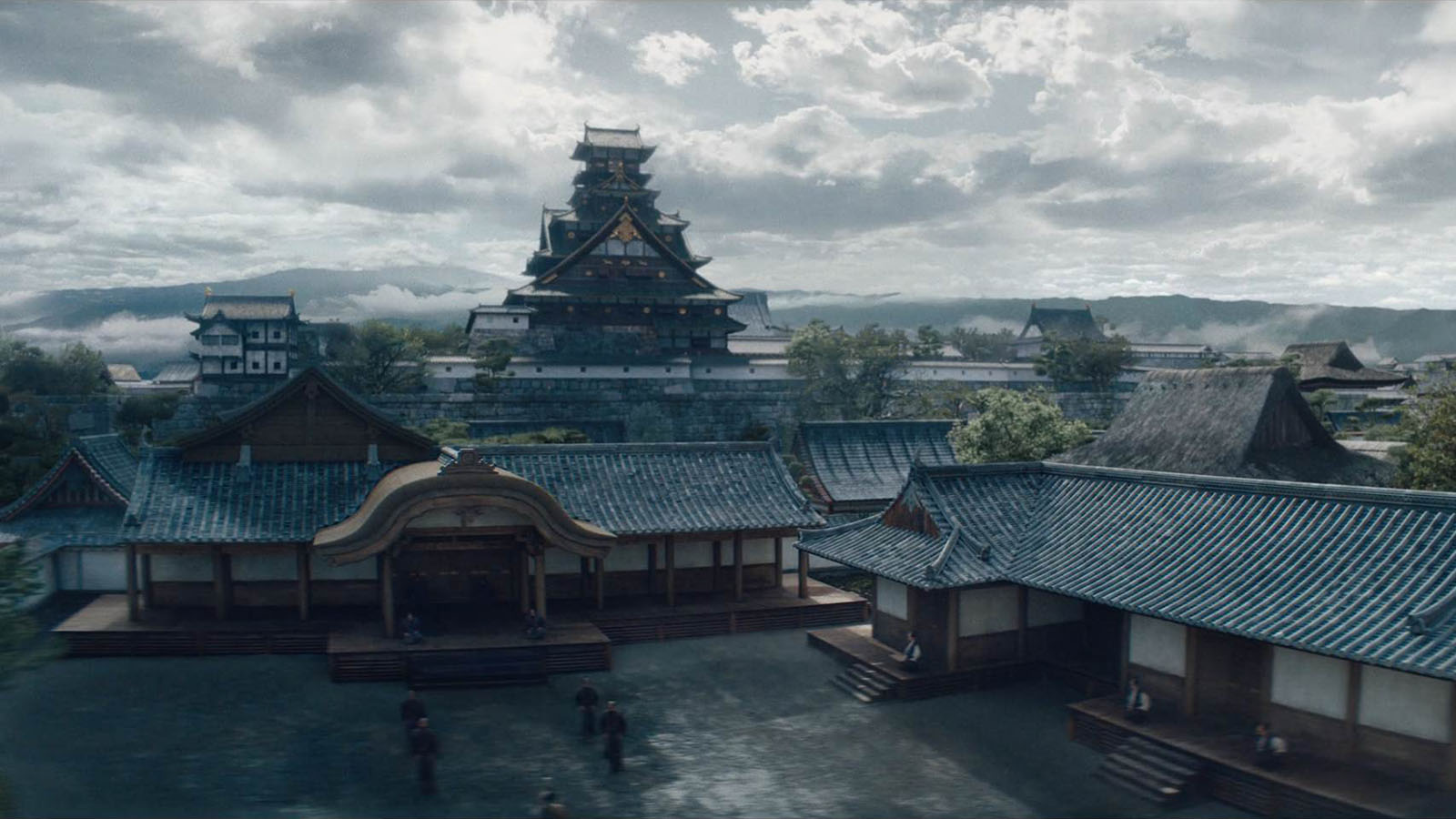
It was really, really hard to choose what to leave out because there was so much to choose from. But as a Japanese person living in Japan, I am familiar with certain moments, like when Buntaro puts the matcha powder in the tea bowl. That is a very cut-to-the-chase moment. Twisting the bowl twice before drinking twice is one of those moments too. Those moments, I think, are very familiar to normal Japanese people as well. So I tried to engage in those moments more than say, a fold in the cloth.
MF: You both collaborated on the finale. Unlike a lot of shows where they throw everything in the kitchen sink into the finale, Shogun’s finale is notable for the battle that never came. You have emotional battles, but you don’t have big battles on the field. How did you two work together on the finale? What challenges did you face in bringing everything to a close?

Maria Gonzales: I did a lot of the editor’s cut. Aika did a few scenes, but when it came to working on the director’s cut, I was completely busy with seven, so she took over. We ended up going back and forth. But once we started working with Justin, we did not divide the scenes by, “This is mine, this is yours.” We each did a pass. If I did a scene that Aika wanted to take a pass on, we did it, and vice versa. Or if there was something that I liked in my cut and she took it away, I would ask for it to go back in. It was a real back-and-forth on all the scenes.
Aika Miyake: Especially Yabushige’s seppuku scene. He smiles at the end. I don’t know if you caught it, but he smiles during the pilot as well when he bowed to Blackthorne after the cliff moment. In the first cut that Maria did, we had that smile in it. And I remember liking it a lot because it felt so Yabushige. But while we were editing to try to make it shorter, it got lost somewhere.
At one point, I had to take it out because of the notes or something. But I always wanted to bring it back. Up until the last moment, I was saying, “Do you think I can bring that smile back?” Then I finally just did it. And then Justin said, “Okay, we can have this.” That was something that felt like collaboration to me. That the scene needed so much reorganizing as well. Maria cut and then I cut, and it all moved around so much. Every time I saw a sequence, it was all different.
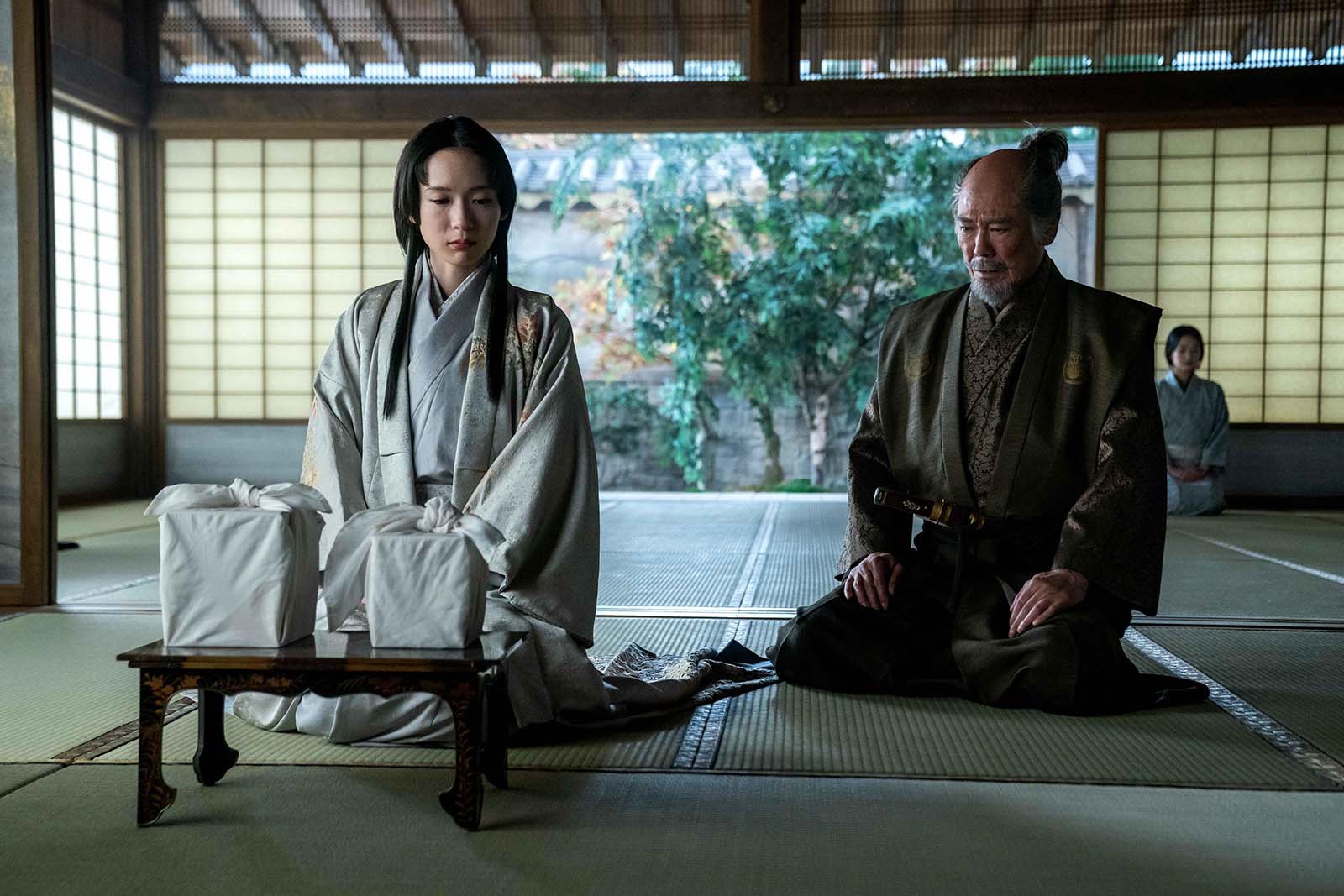
MF: Earlier, we talked a little bit about flashbacks. Let’s talk about flash forwards. The finale begins with a flash forward to Blackthorne as an old man in bed. He seemed to have never gotten over his time in Japan with Mariko. Even though this is a story that’s already out there, and you can learn of Blackthorne’s fate by googling it or reading the book, why tip your hand to the audience at the beginning of the episode with a flash forward that says, “He lives. Nothing bad is going to happen to him.” Was there ever any discussion about having that in or not?
Maria Gonzales: Not really. The title of that episode gives away that scene’s concept of that scene: “A Dream Of a Dream”. An earlier cut of the episode made it clearer. In that cut, we showed an old Blackthorne living in Japan. But we cut that out for a very good reason. We used parts of that ending to build out a more emotional moment for him midway through the episode.
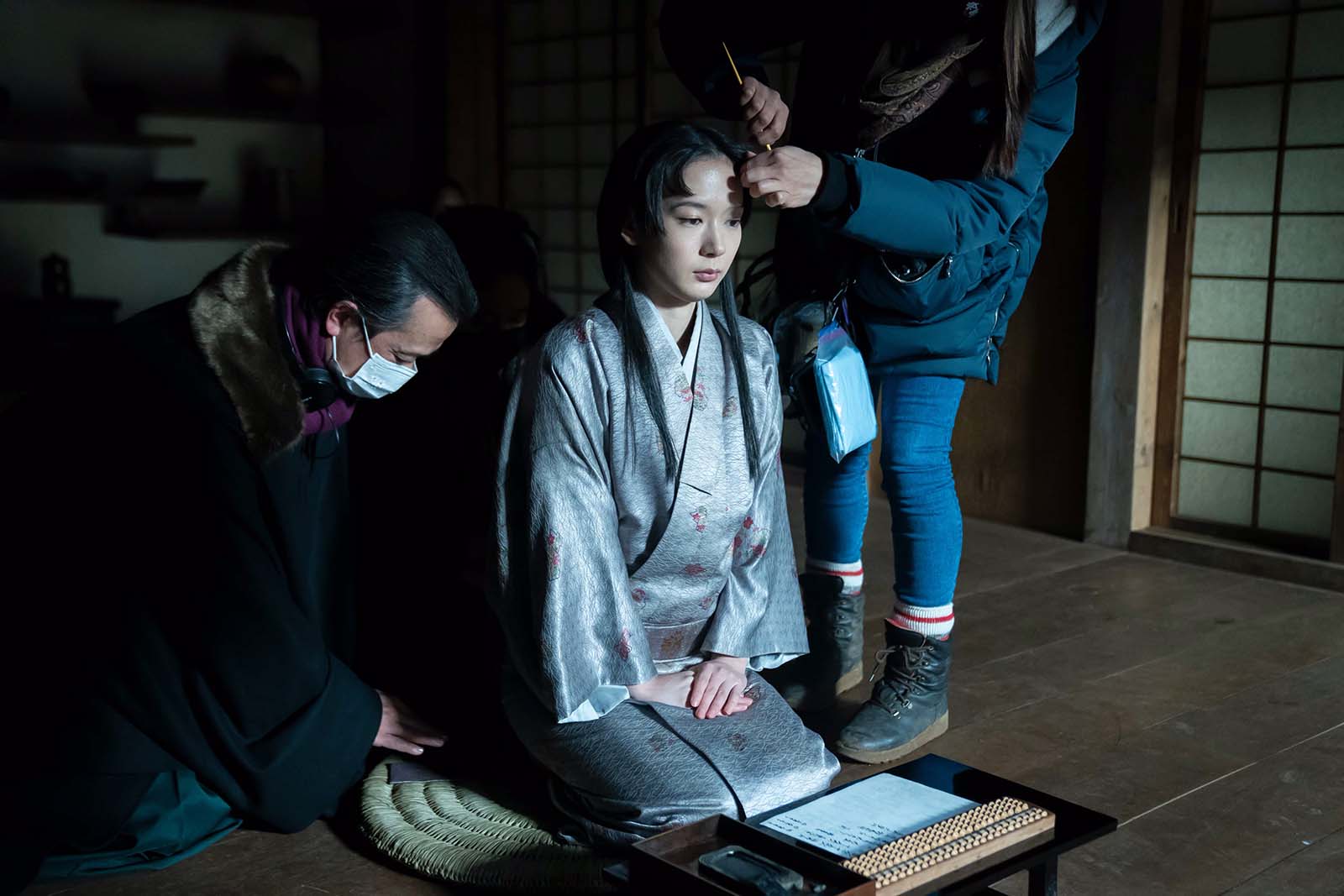
Aika Miyake: When I worked on the episode with Fred Toye, the director, he had an idea where Blackthorne was meditating in his house. They shot it for the ending, but Fred decided to put it before Blackthorne confronted Toranaga. That was such a great move.
Maria Gonzales: We feel like, with the way the story ends now, you sense that Blackthorne stays there. And, you learn through Toranaga’s conversation with Yabushige that Toranaga is going to keep Blackthorne in Japan if he can. Maybe it is a little open-ended, but that opening is more of a dream or nightmare that Blackthorne is having instead of reality.
MF: See, I don’t pick up on everything. Well, you already answered my next question, which was, “Was there ever more of that opening scene?”
Maria Gonzales: There was more of that opening scene. It was one of the most challenging scenes, believe it or not, in the entire show. A lot of the talking in that ended up getting pulled.
MF: What was each of your favorite scenes from the series to cut?
Aika Miyake: Mine was Hiromatsu’s seppuku scene. It was a gut-wrenching, important scene. I didn’t sleep because of the intensity. I couldn’t sleep, I just kept cutting. The acting was so genuine and so good. I learned afterward that Tokuma Nishioka, who played Hiromatsu, and Hiroyuki Sanada, who played Toranaga, have a relationship off-screen. They have both been working together in Japan’s film and TV industry for a long time, and it shows in that scene. And it’s a hard scene for Buntaro and Omi too. That scene felt like such a homage to a lot of Japanese samurai and Bushido films. I just knew that it had to be right. The intensity of it was so much. I’m very proud of how it turned out.
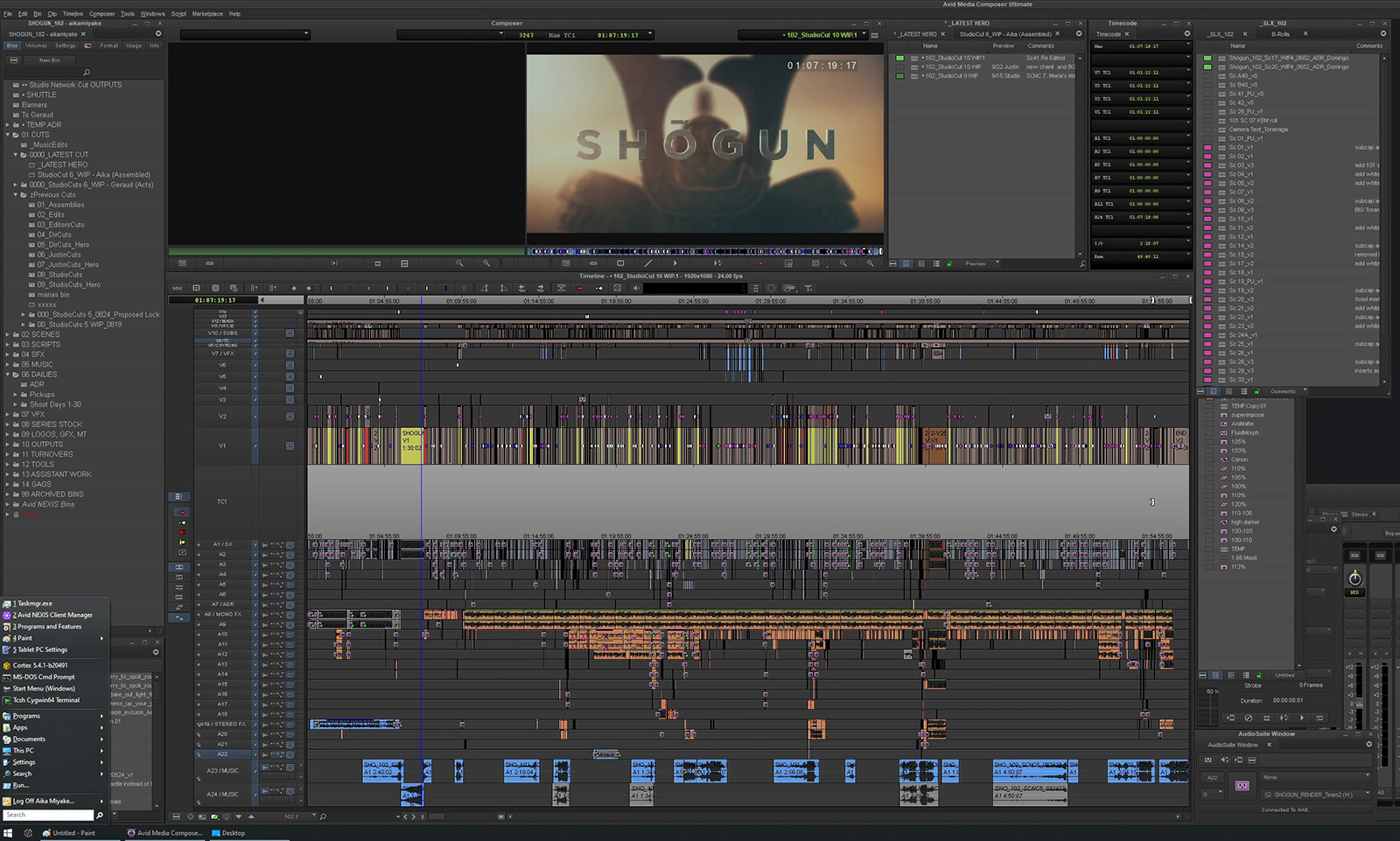
Maria Gonzales: It’s hard to pinpoint a scene because there were so many great, challenging scenes that I loved putting together. But I’m going to settle on a seemingly simple scene. It’s the scene that gives the title to episode seven, “A Stick of Time.” It’s the scene between Gin and Toranaga. In that scene, Gin asks Toranaga to secure a future for her lifestyle and the industry that she’s starting. It’s the only scene in the entire series where Toranaga loses. He’s not two steps ahead of the person that he’s speaking with. I enjoyed the rapport between them. I love that scene so much. It’s one of my favorite scenes in the whole show. It may not be an obvious one, but, you know, there it is.
MF: Those are both good answers. Let’s close out our talk with some thoughts on learning. Maria, you’ve assisted a lot of great editors, Bob Leighton on Chef, Dana Glauberman and Up in the Air, and Counterpart, and Chris Rouse on The Bourne Ultimatum. Did you learn anything specific from working with any of them or any of the other editors you assisted?
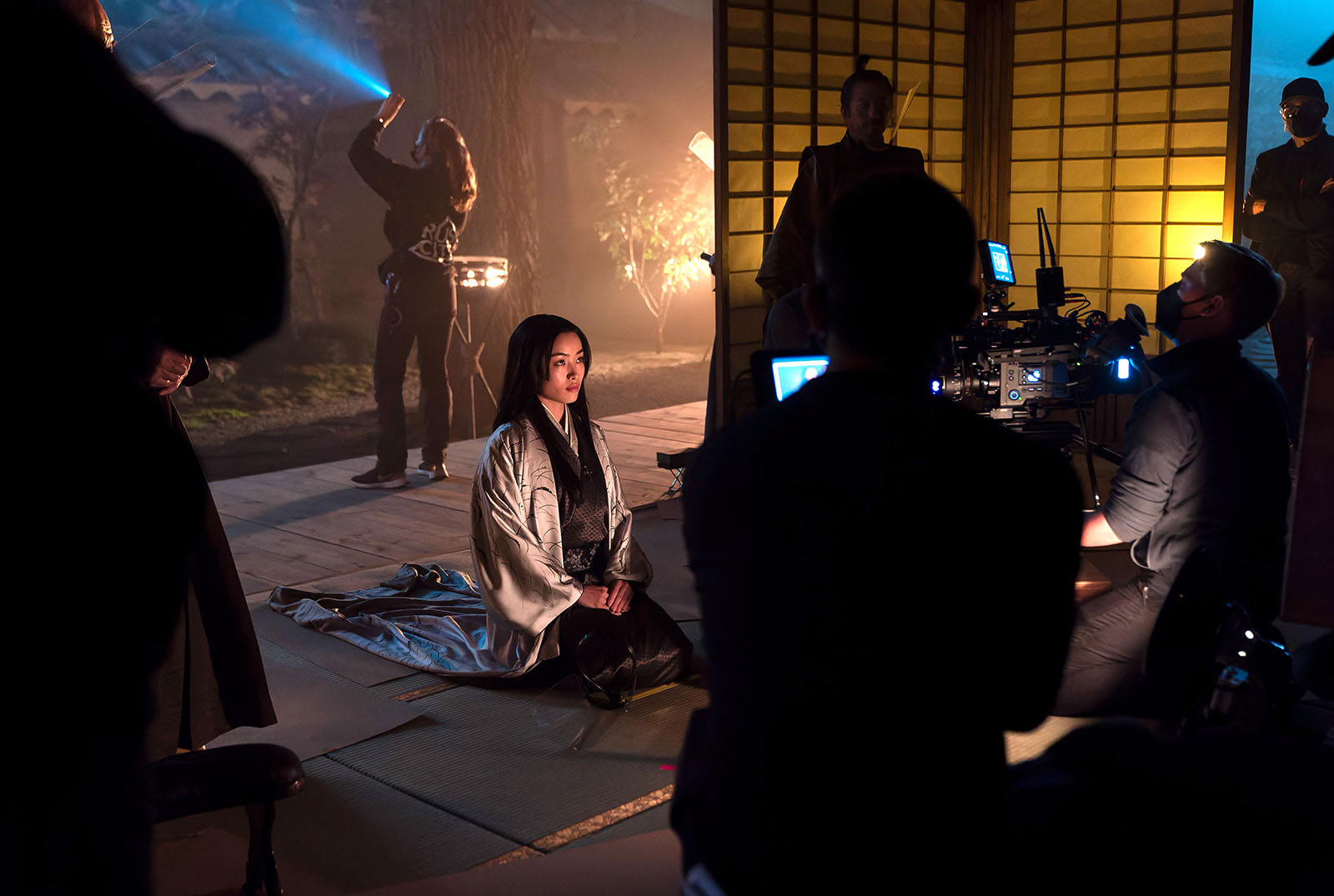
Maria Gonzales: A quality that all three of those people possessed is that they would not hesitate to bring the assistant in and ask for opinions. Mentorship is such a big part of the craft, and I am grateful to all of them for everything that I’ve learned from them. They each had their cutting style. We could go on and on about those. But when an editor is generous with their time, there’s nothing more one can ask for.
MF: That’s a great answer. Aika, you’re one of those editors we find from time to time who has no assistant credits on their IMDb page. That could just be the way the industry is in Japan. But I thought we’d take a little time to ask you about how you got your start in editing.

Aika Miyake: When I started, I had a different career. I started by doing online VFX work on AVID for Japanese TV. I was an assistant on these jobs, creating graphics on VFX, and all of that. But then Cutters Studios, a Chicago-based post house for commercials, opened up the studio in Tokyo, and I was the first assistant working there. I was on a huge Nike campaign in Japan, and that’s where I found creative editing.
Commercial editors work relentlessly to make the cut better. They tweak and twist and try everything. They cut in so many ways to get the best commercial out of the footage. And that passion and attitude got into me while I grew up in this assisting environment. I still do commercials and I love them. I’m surrounded by so many talented editors and they all cut amazing stuff. I’m just so blessed.
MF: Just like you both put a lot of work into how you end your series, I put a lot of work into how I’m going to end an interview. It doesn’t usually end very well, but I’m going to try something a little different with you guys. So hang on, strap yourselves in.
Because this show is all about authenticity and learning about Japan, I have a little quiz question for you. This didn’t come up in the show, but it did kind of. The samurai carry two swords. One is a katana, which I think a lot of people have heard of. The katana provides a longer reach to initiate and prevent attacks. They also carry a shorter sword that was primarily used in close combat. What is that shorter sword called?
Aika Miyake: Oh my God.
Maria Gonzales: I have no idea. Justin cannot hear this.
Aika Miyake: I know how to write it in kanji. But I’m not sure how it reads.
MF: I’m sorry, you got me because I can’t write it in kanji. But it’s a wakizashi.
Maria Gonzales: That’s it.
Aika Miyake: Oh, maybe I’m wrong.
MF: Maybe I’m wrong! I think there’s more of a chance of that.
Aika Miyake: Well, nowadays, no one carries wakizashi.
MF: Thank goodness.
Maria Gonzales: Only katanas.

